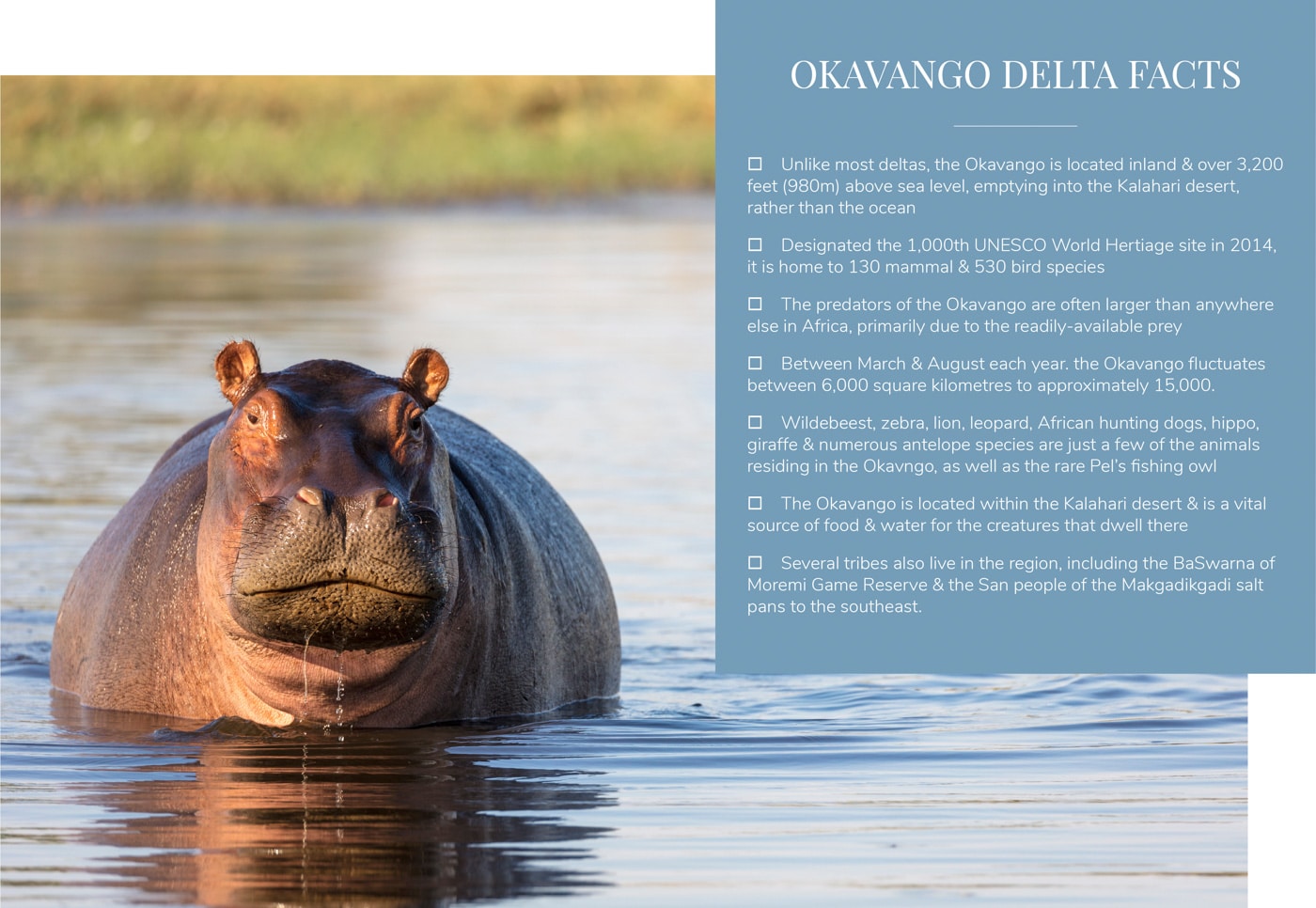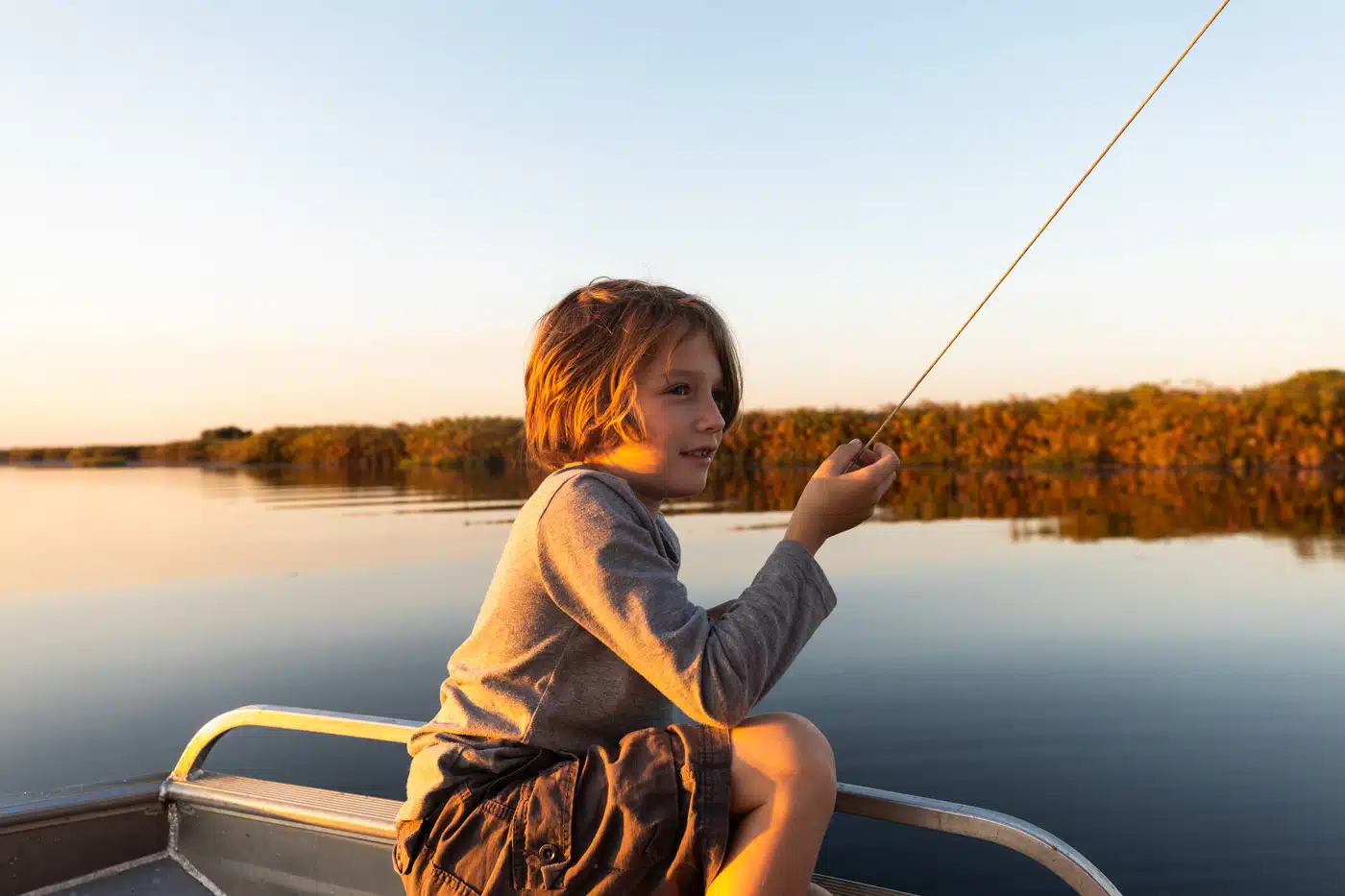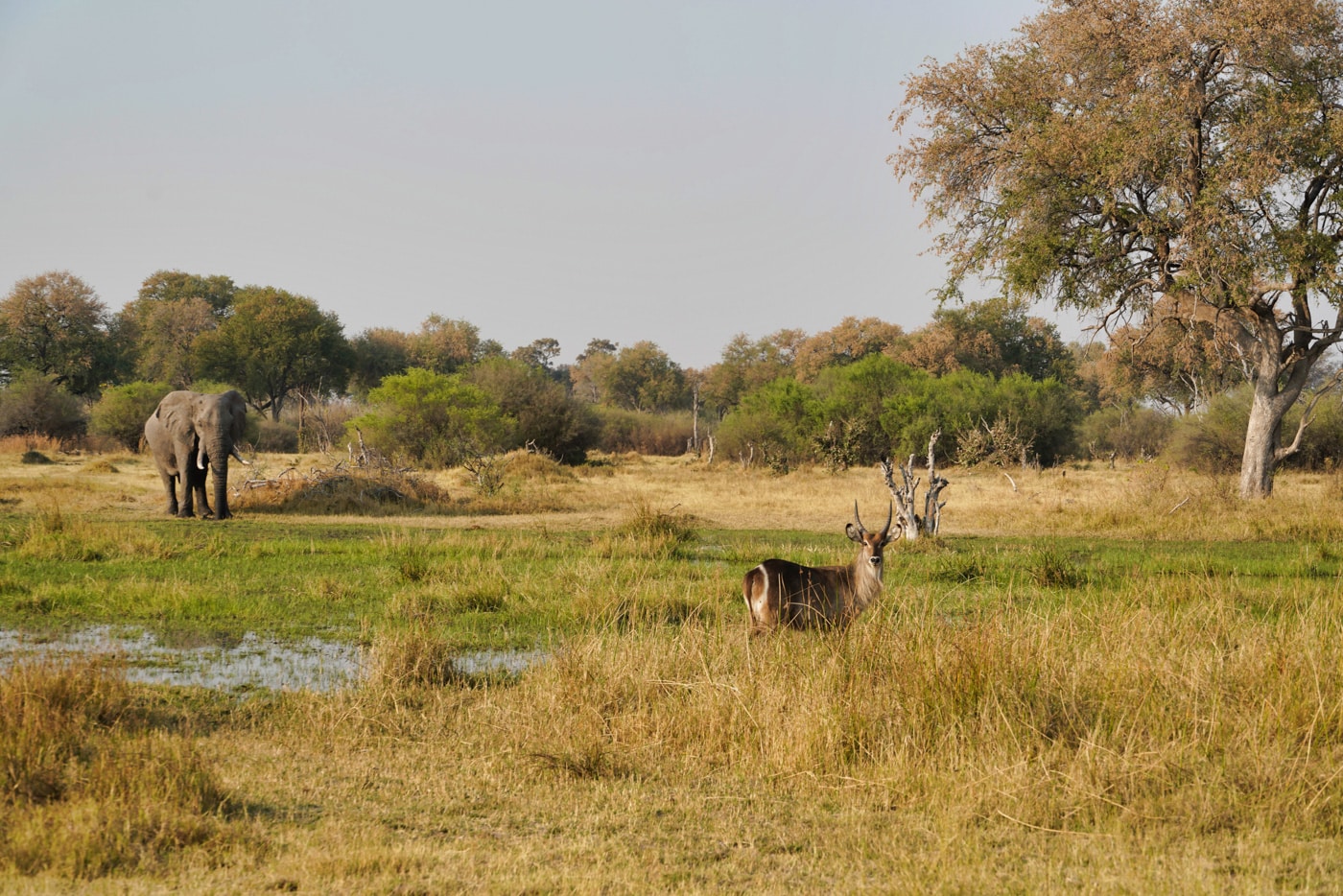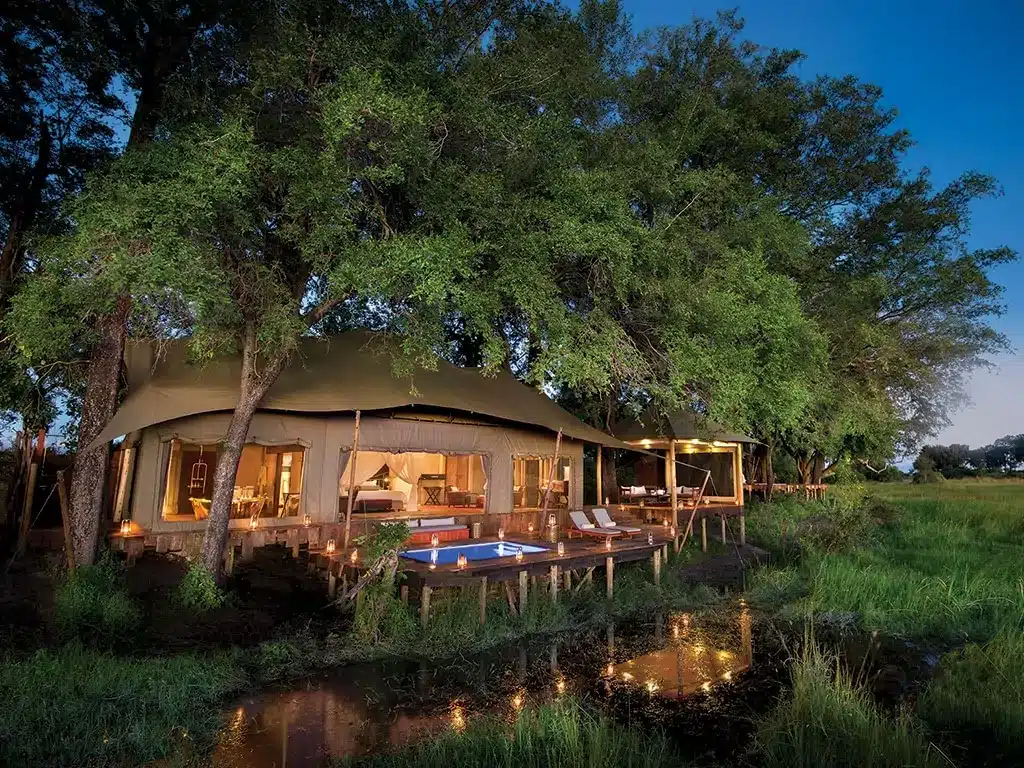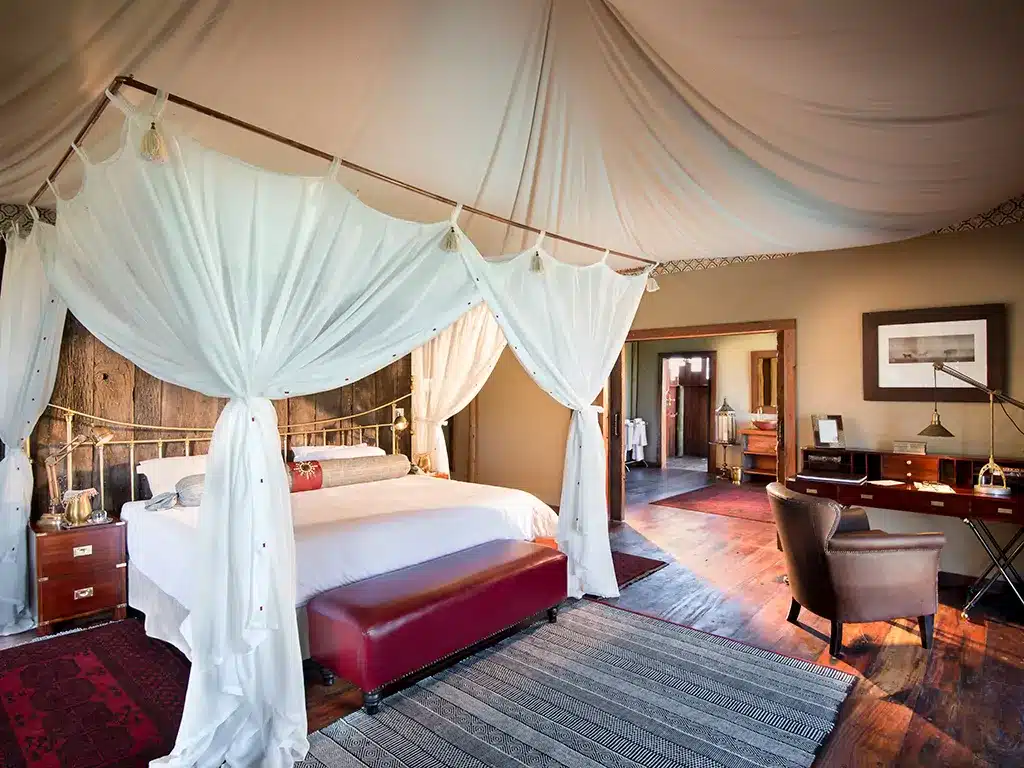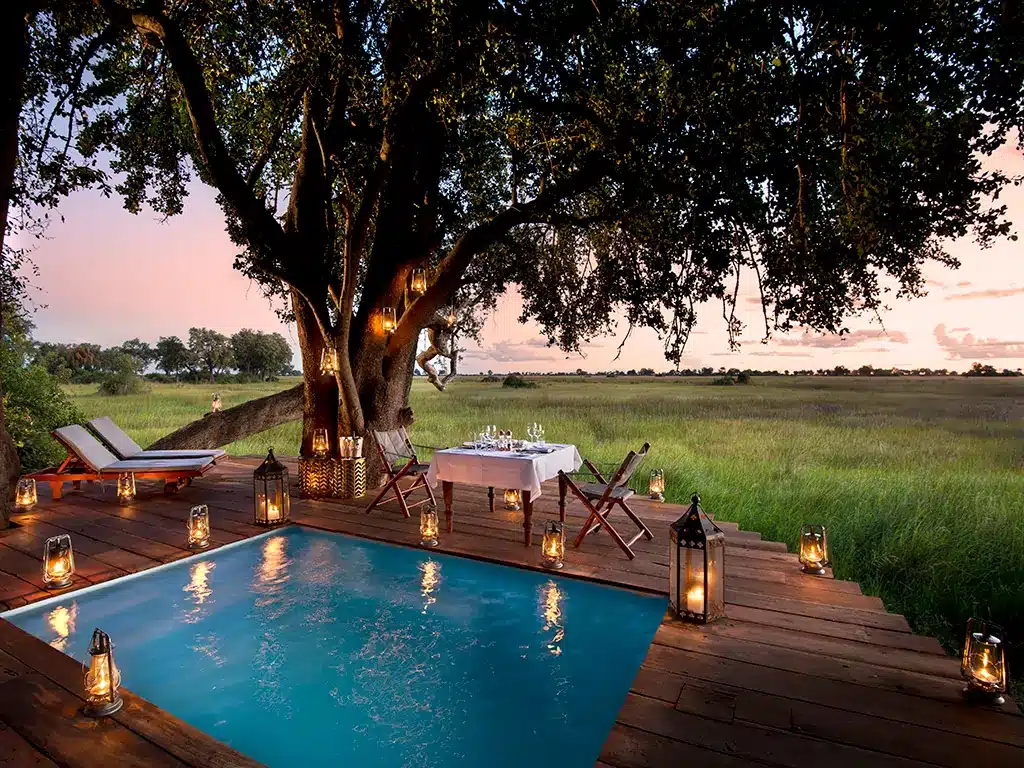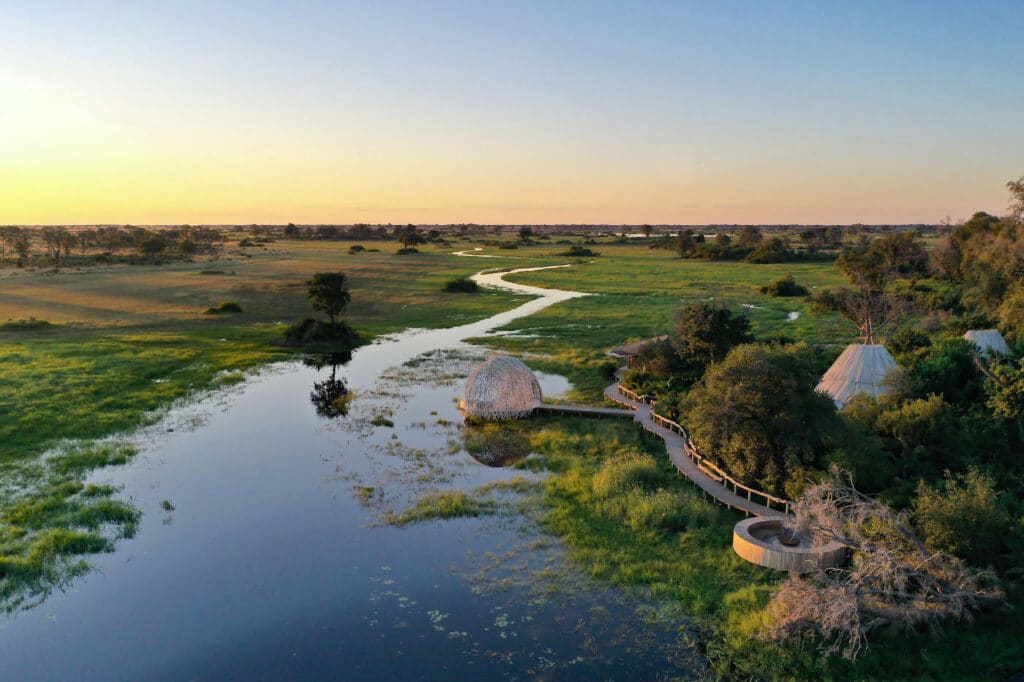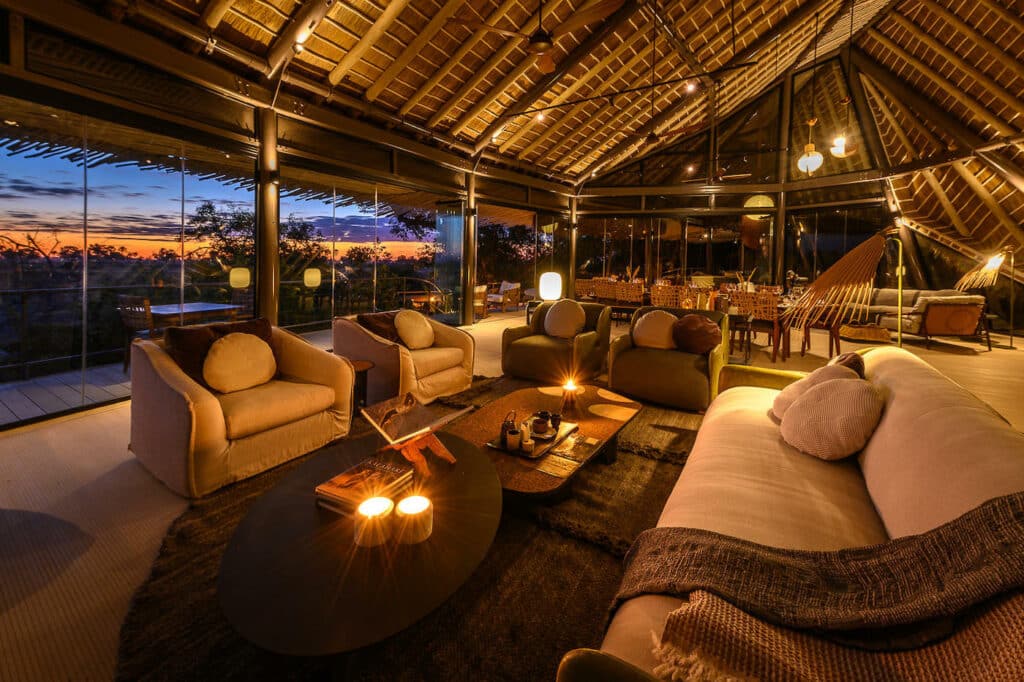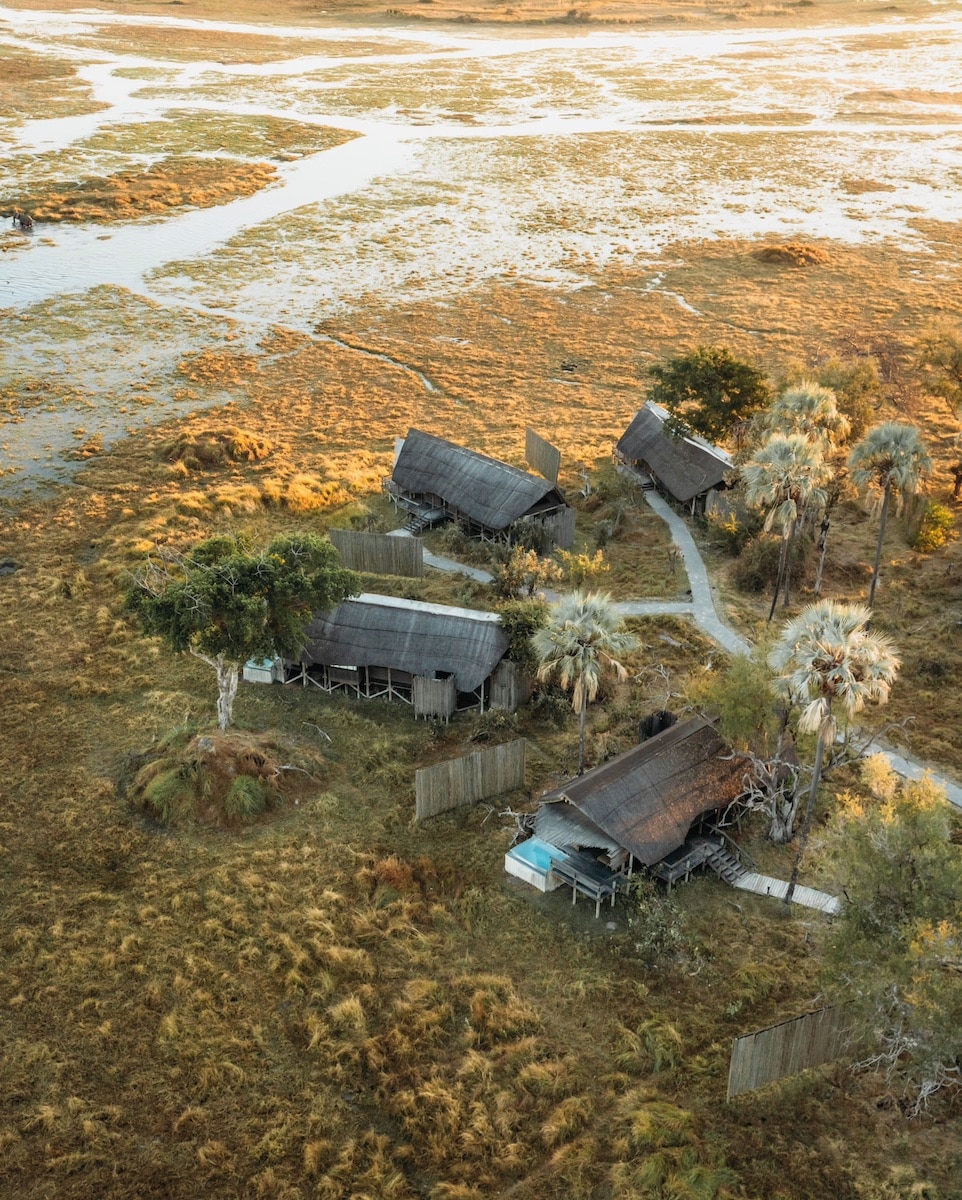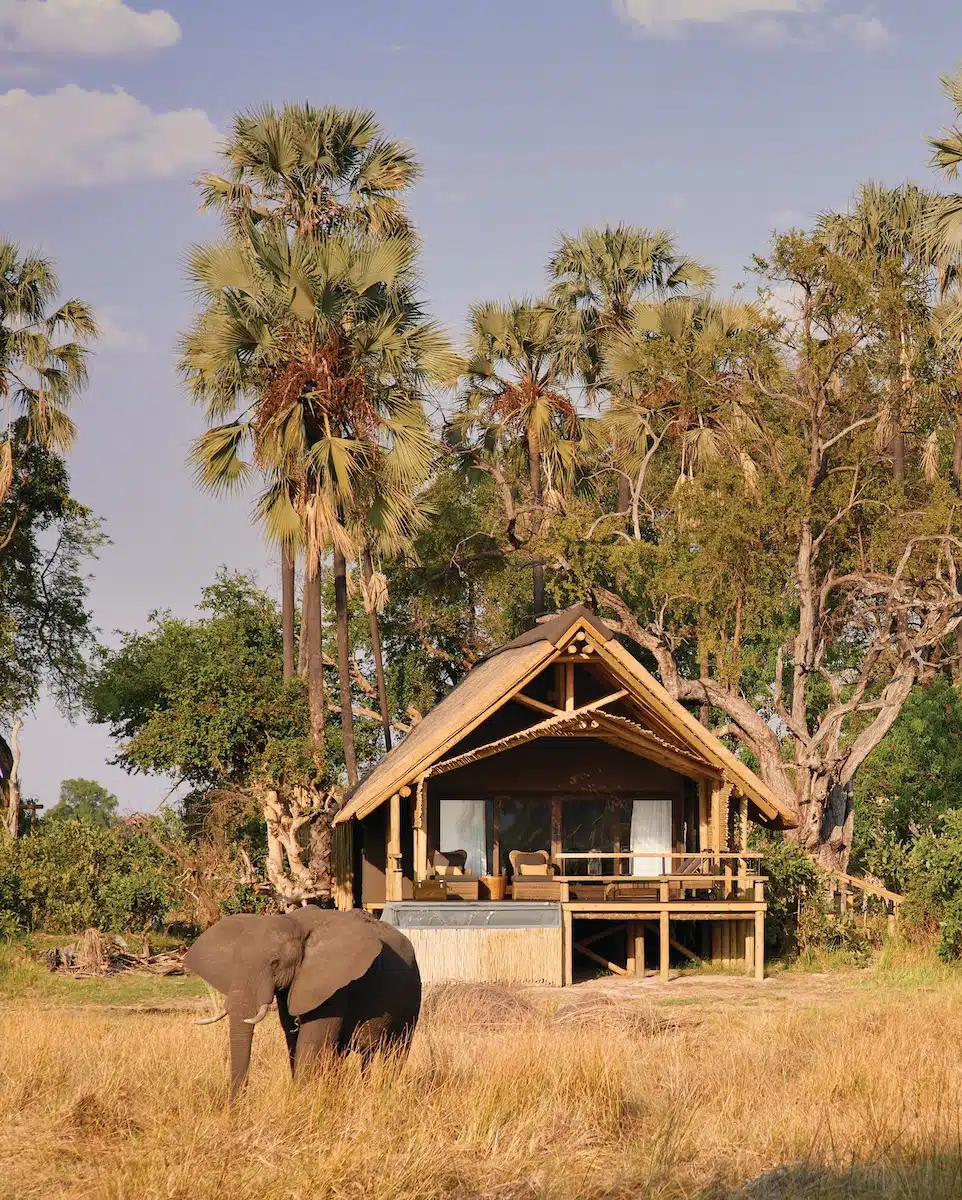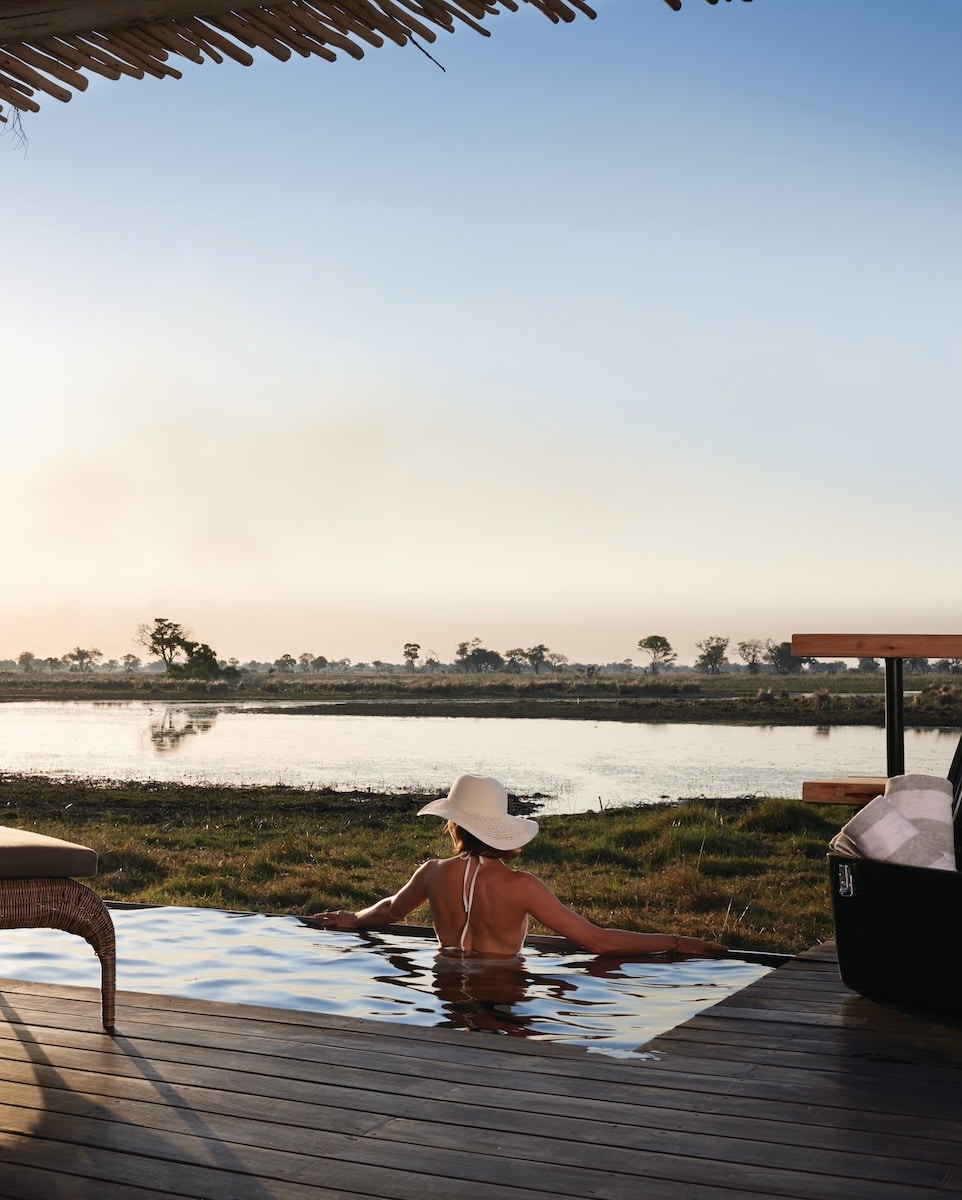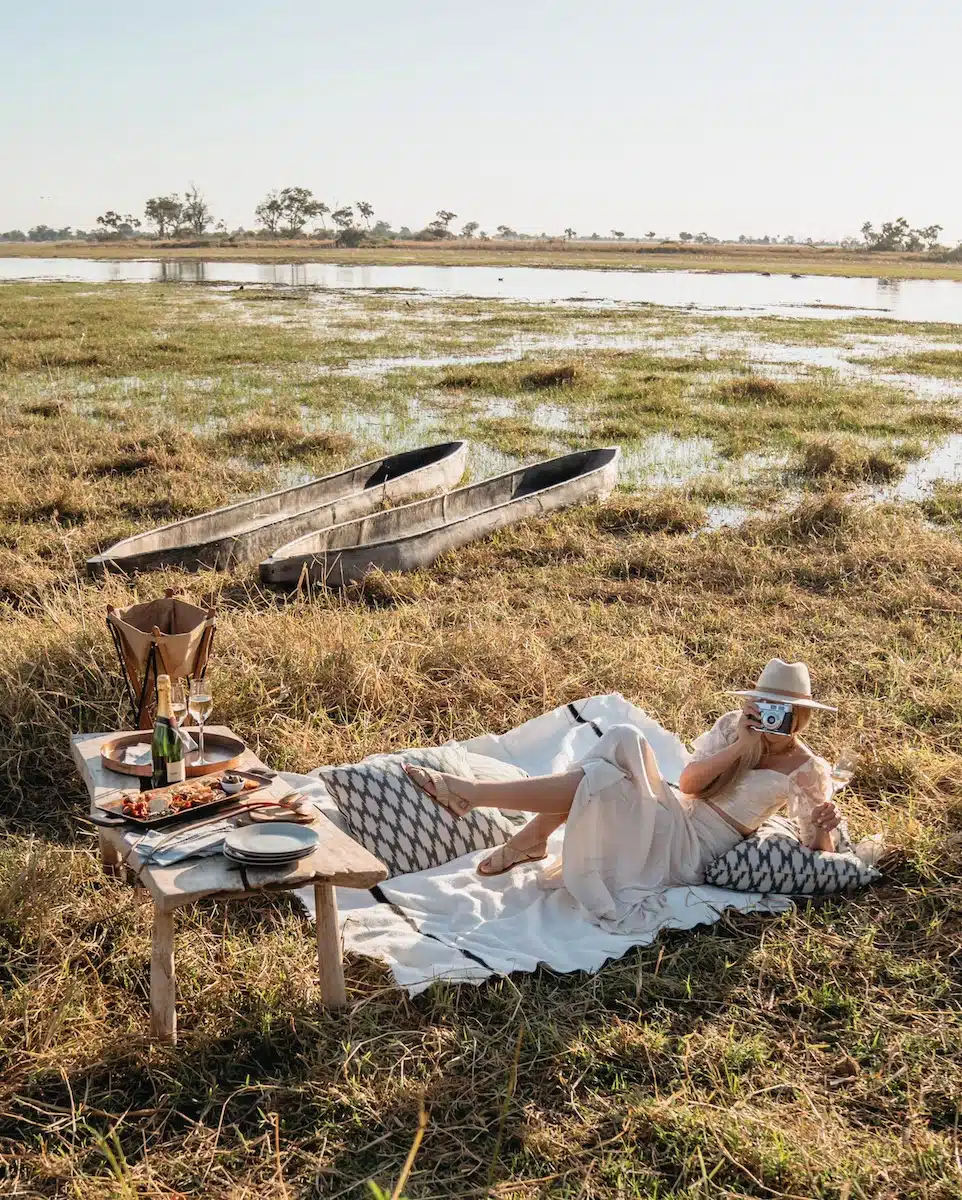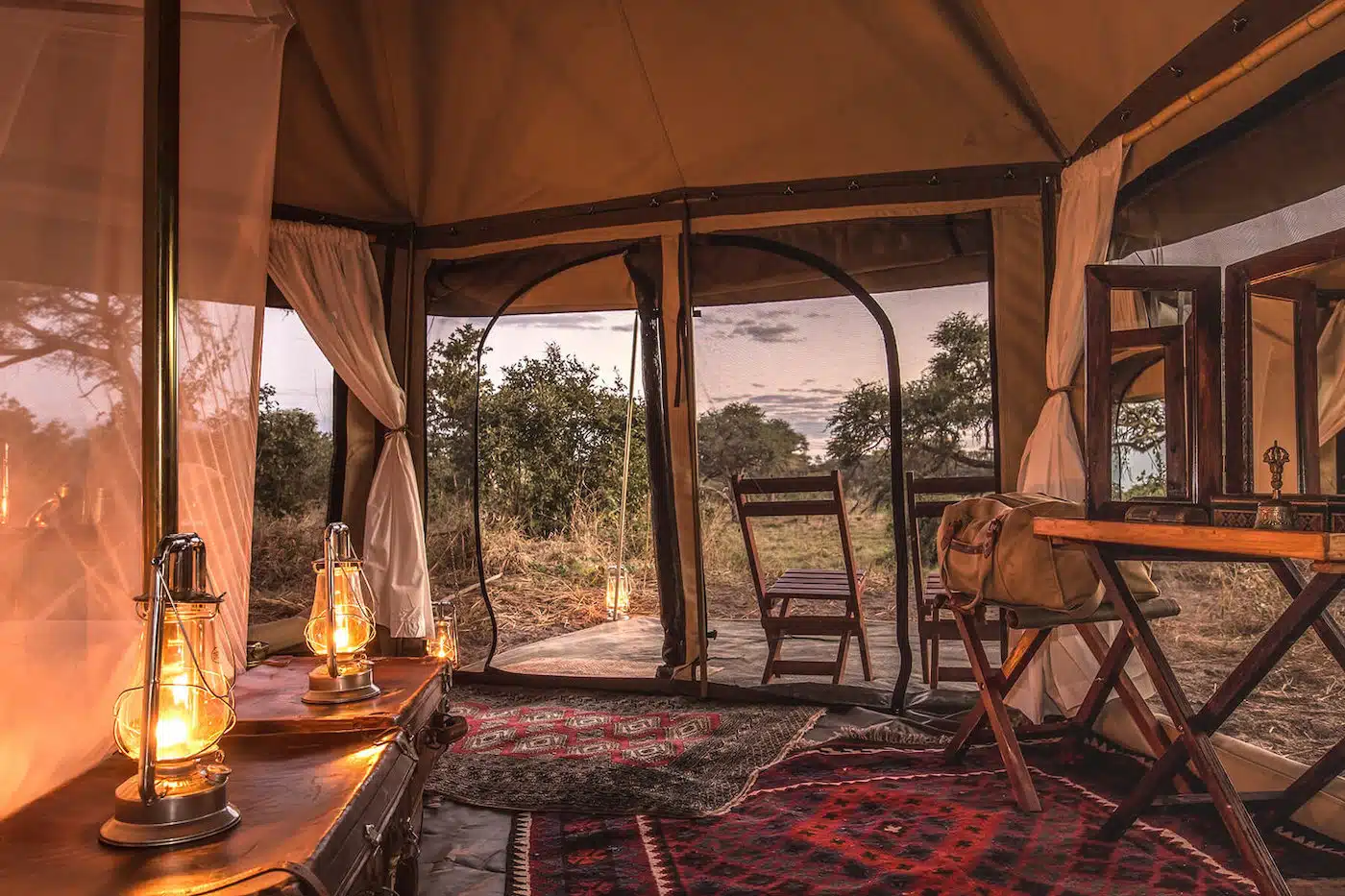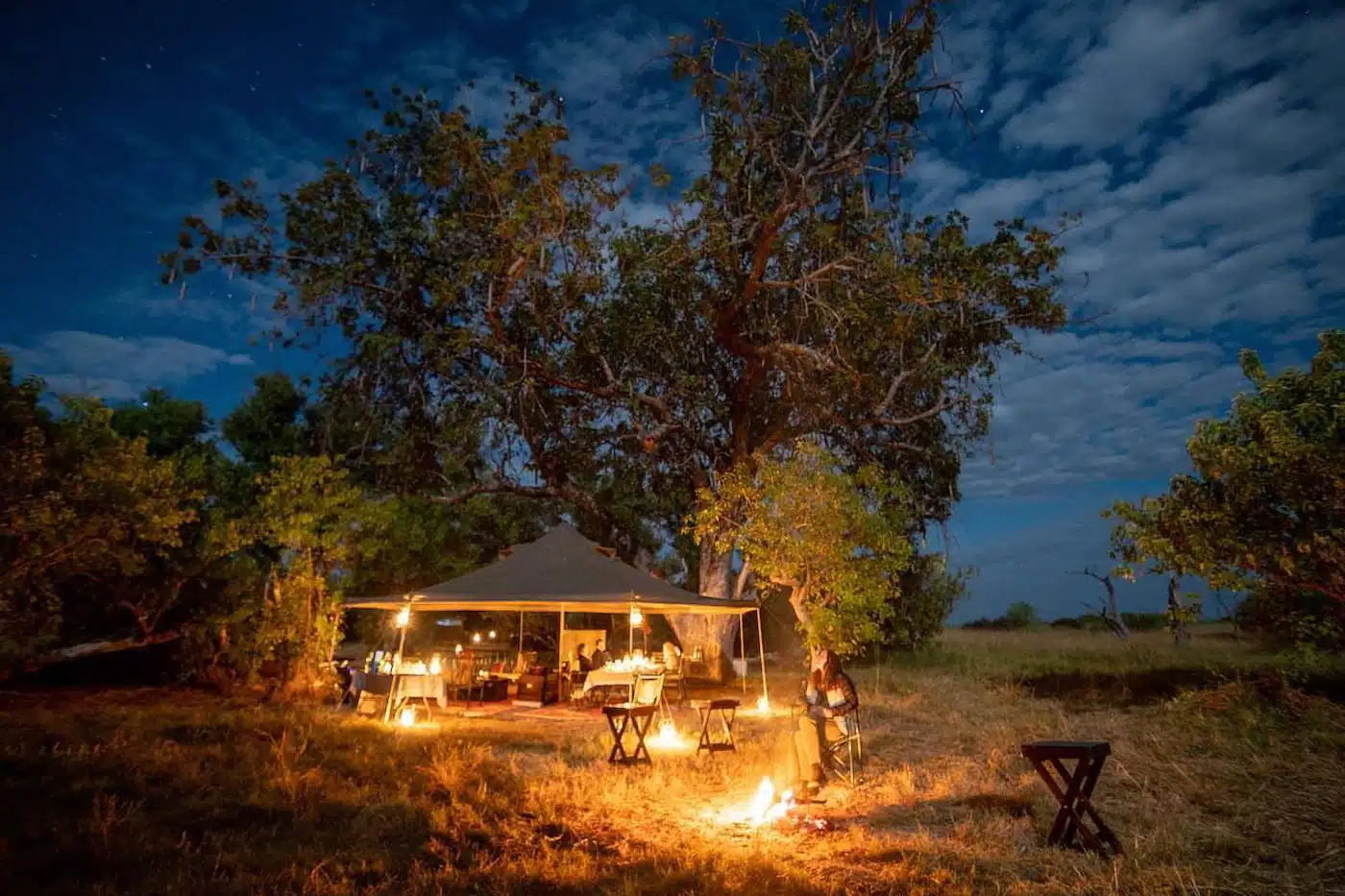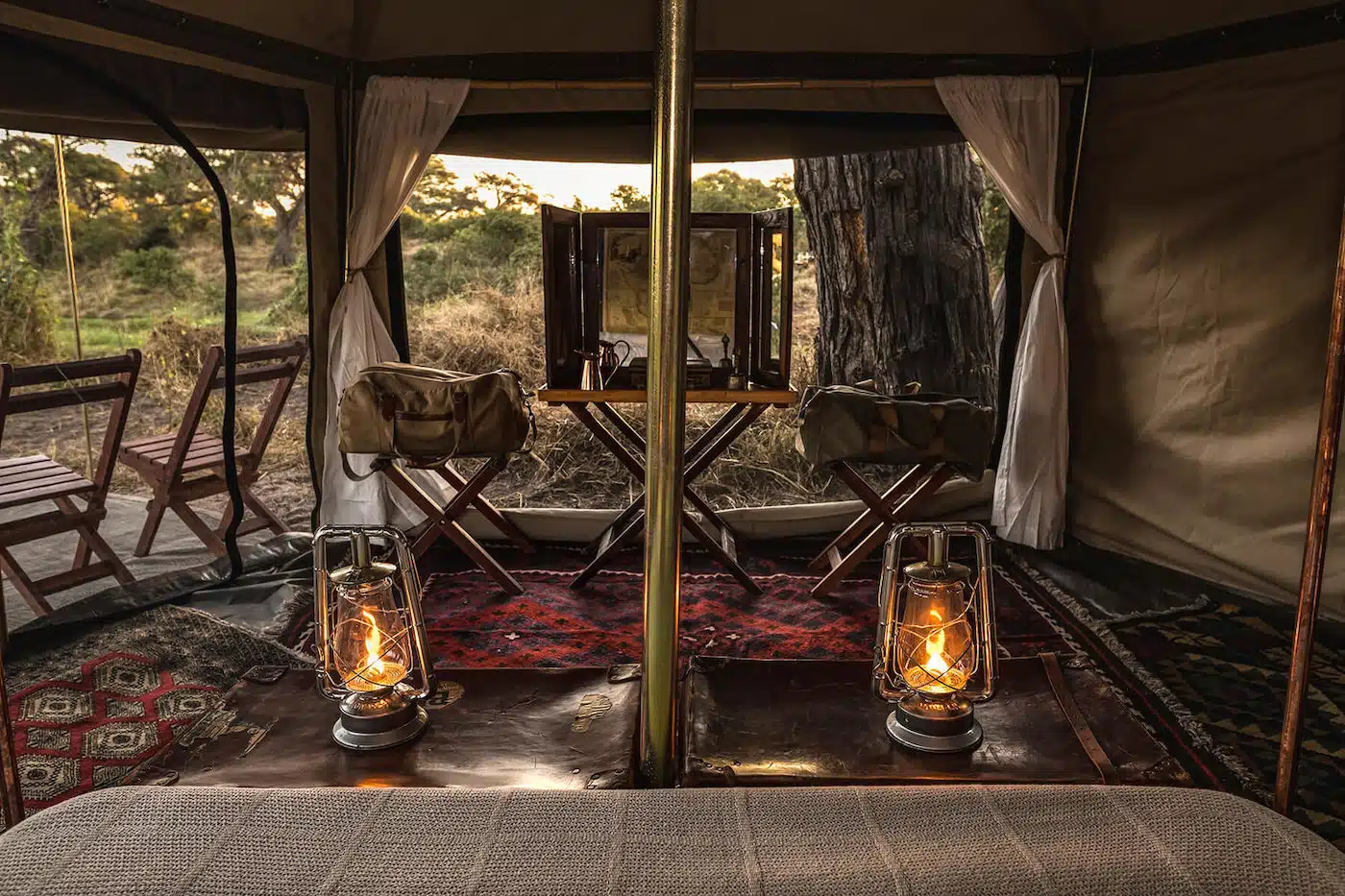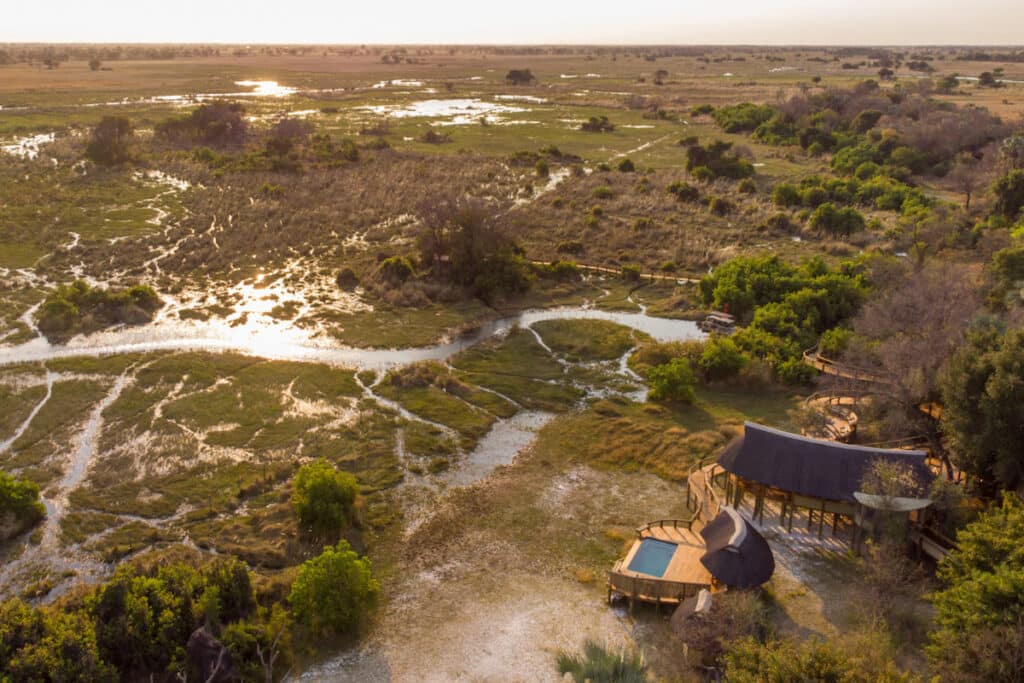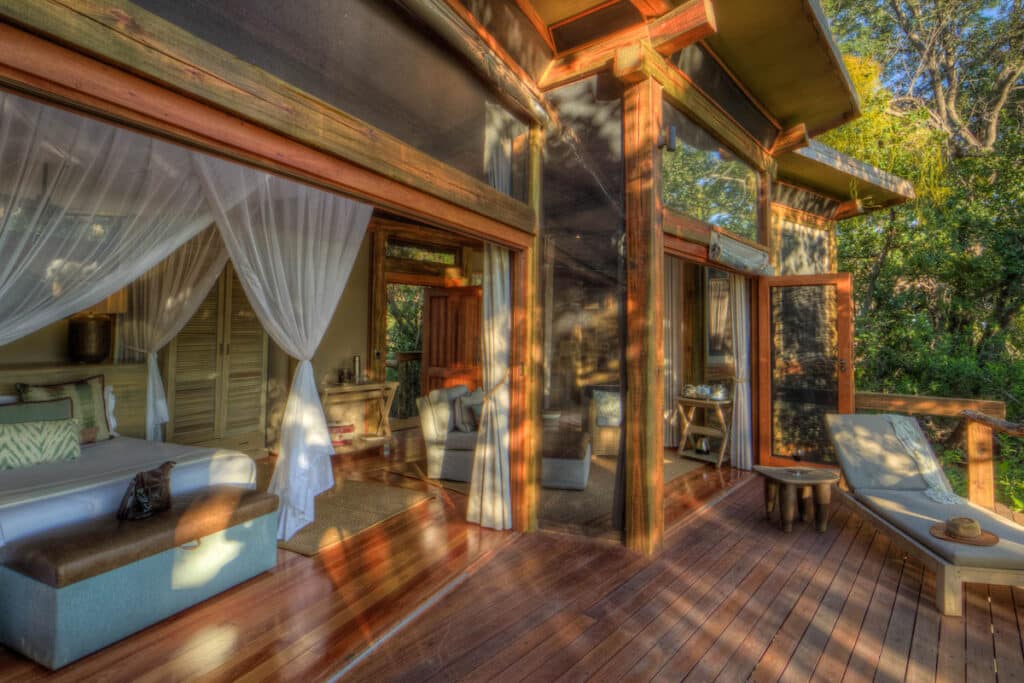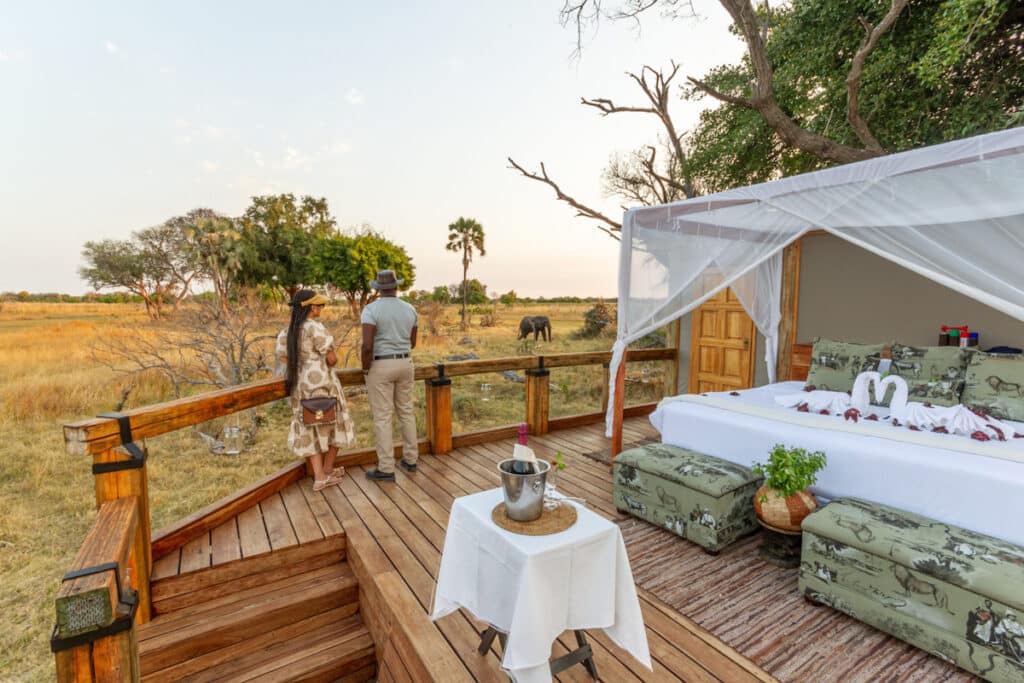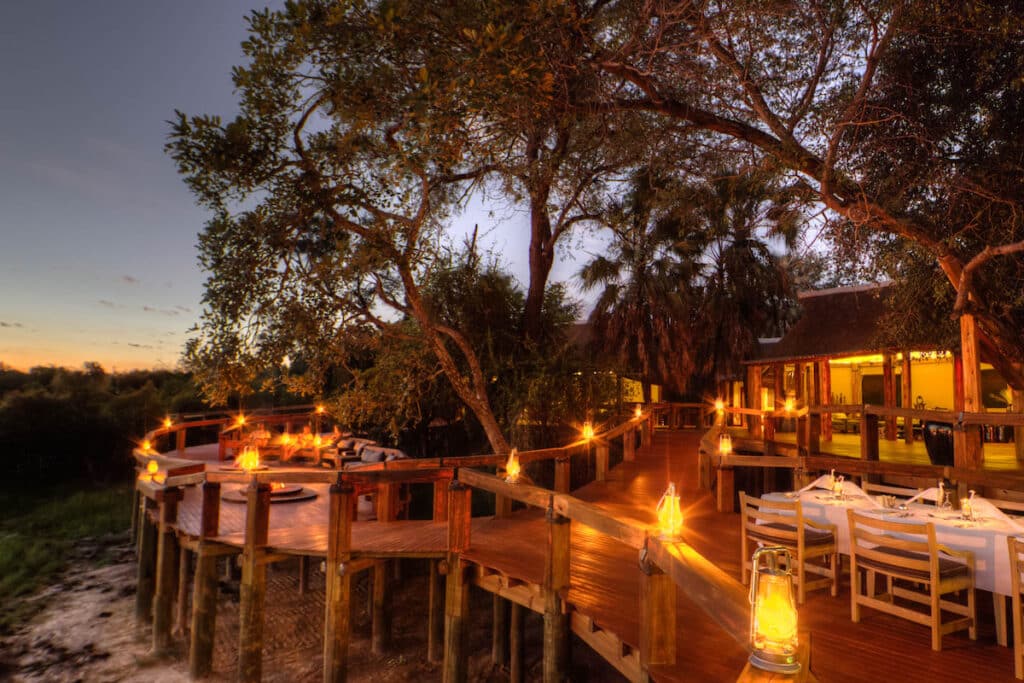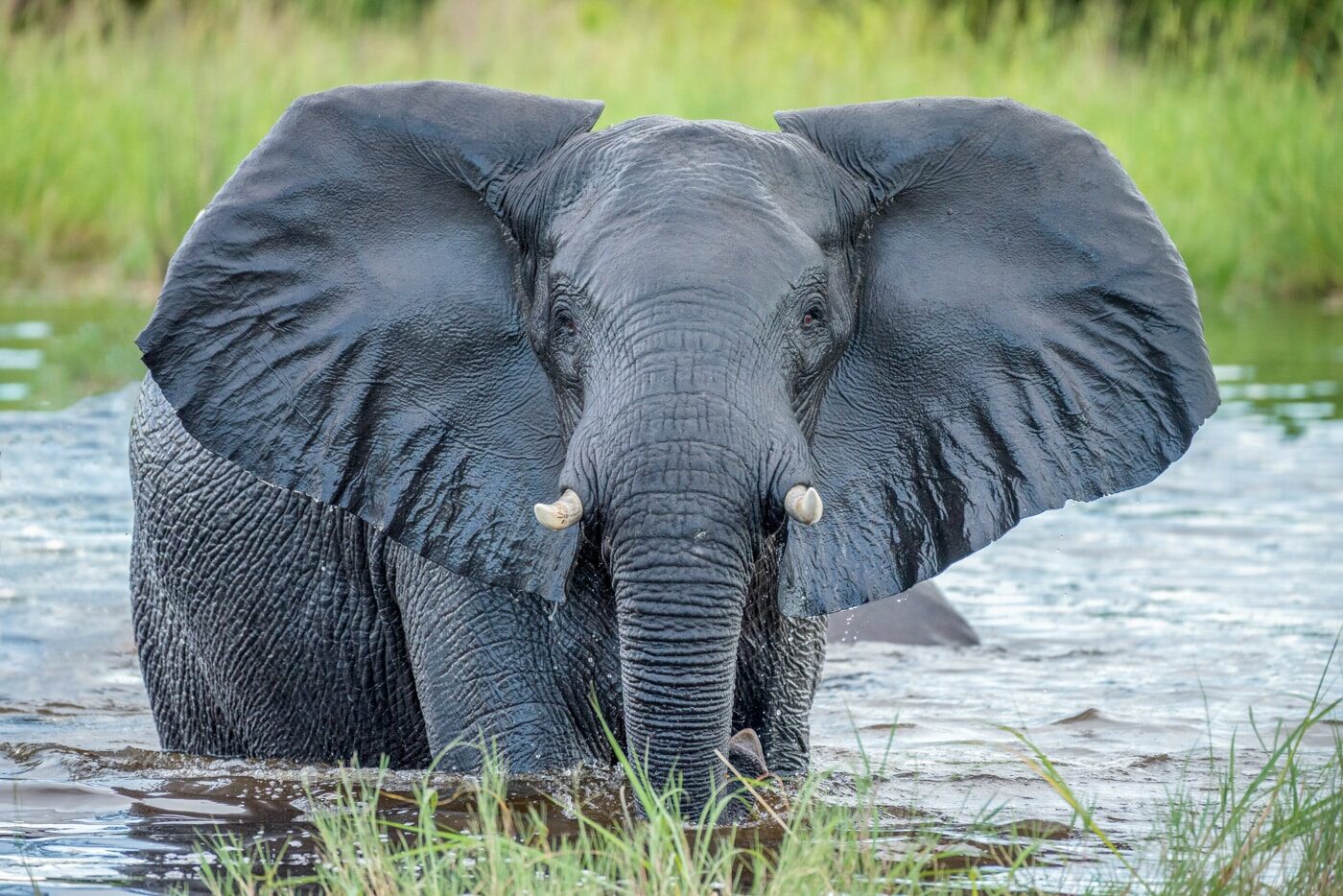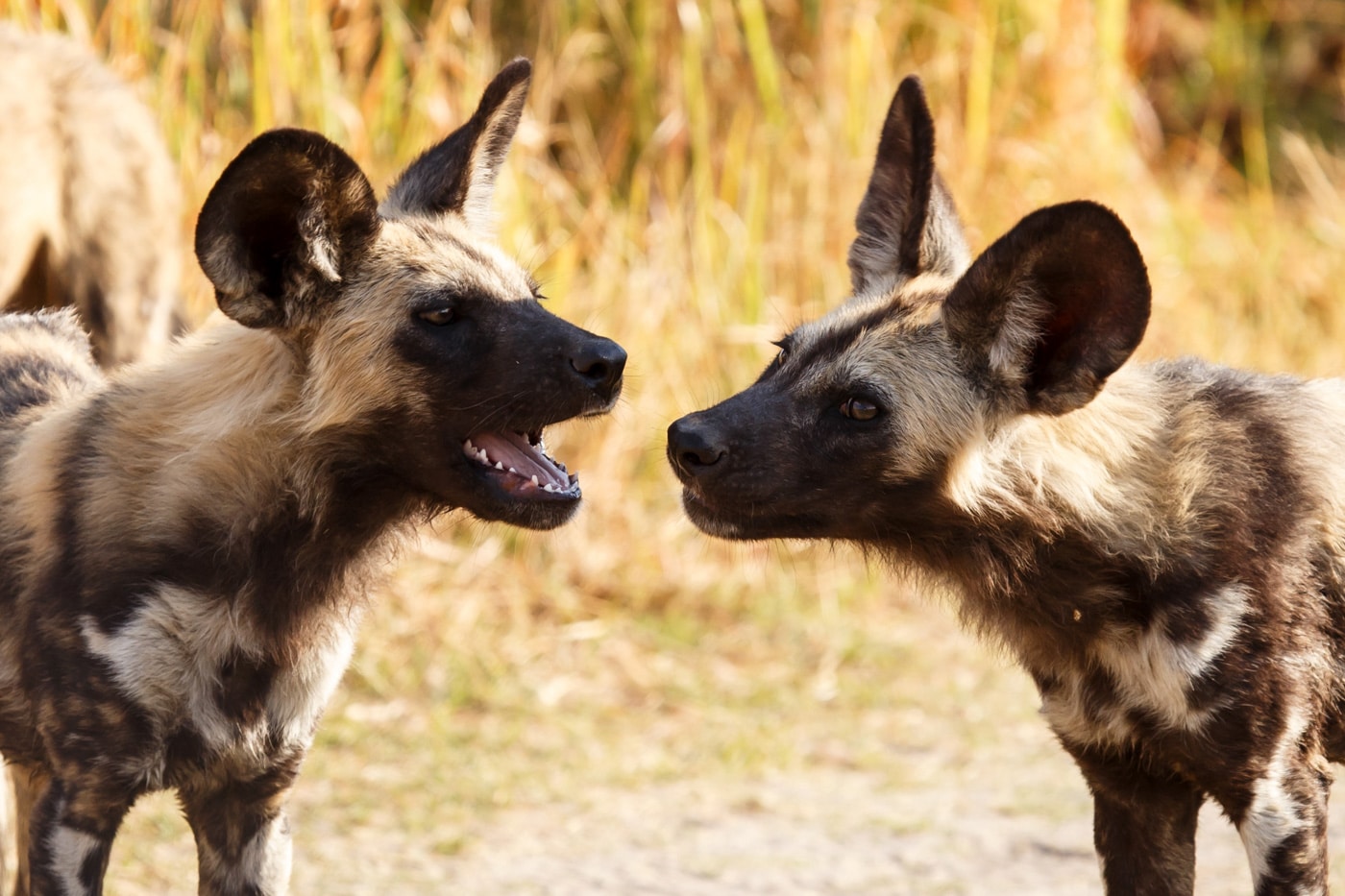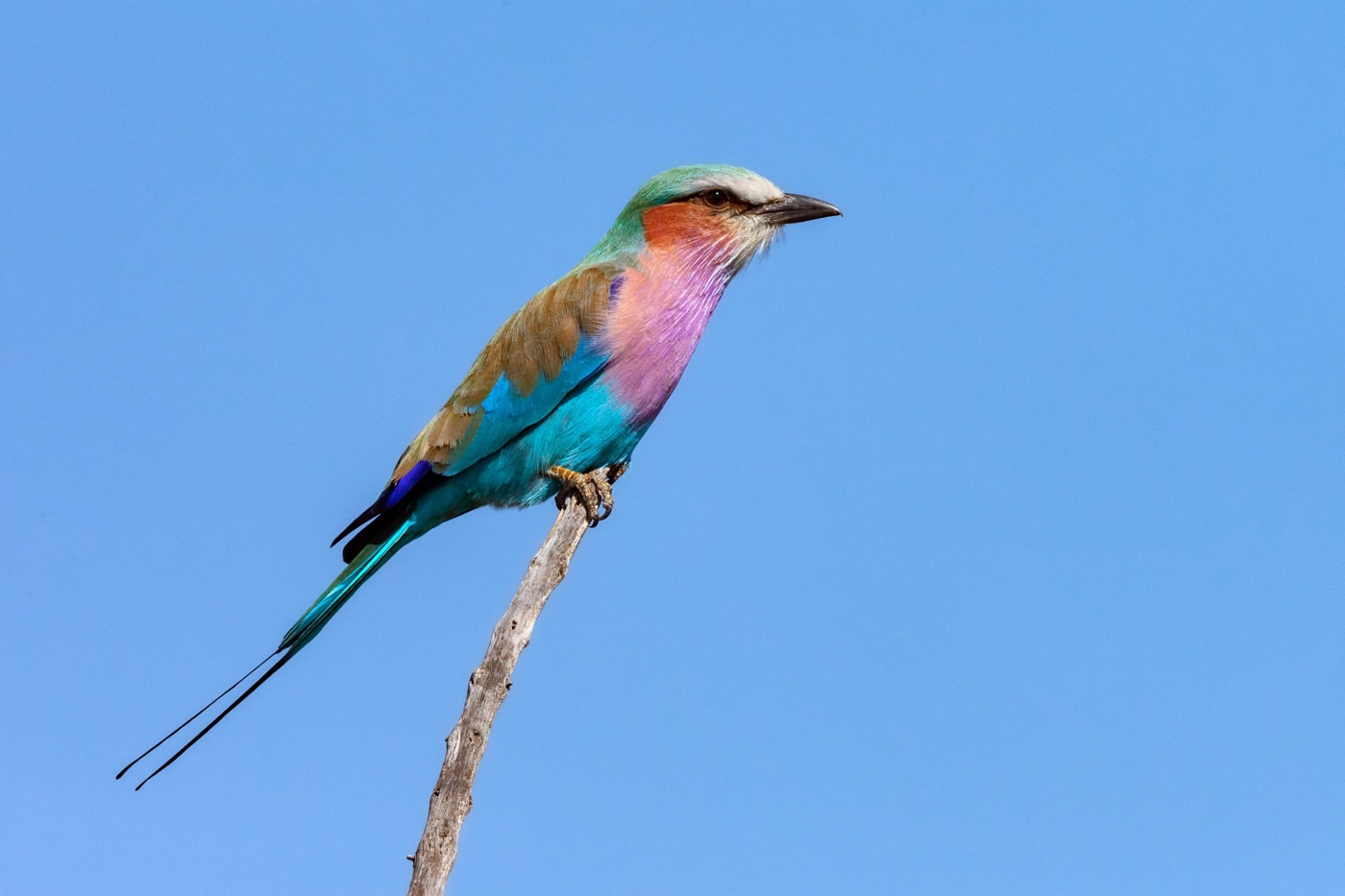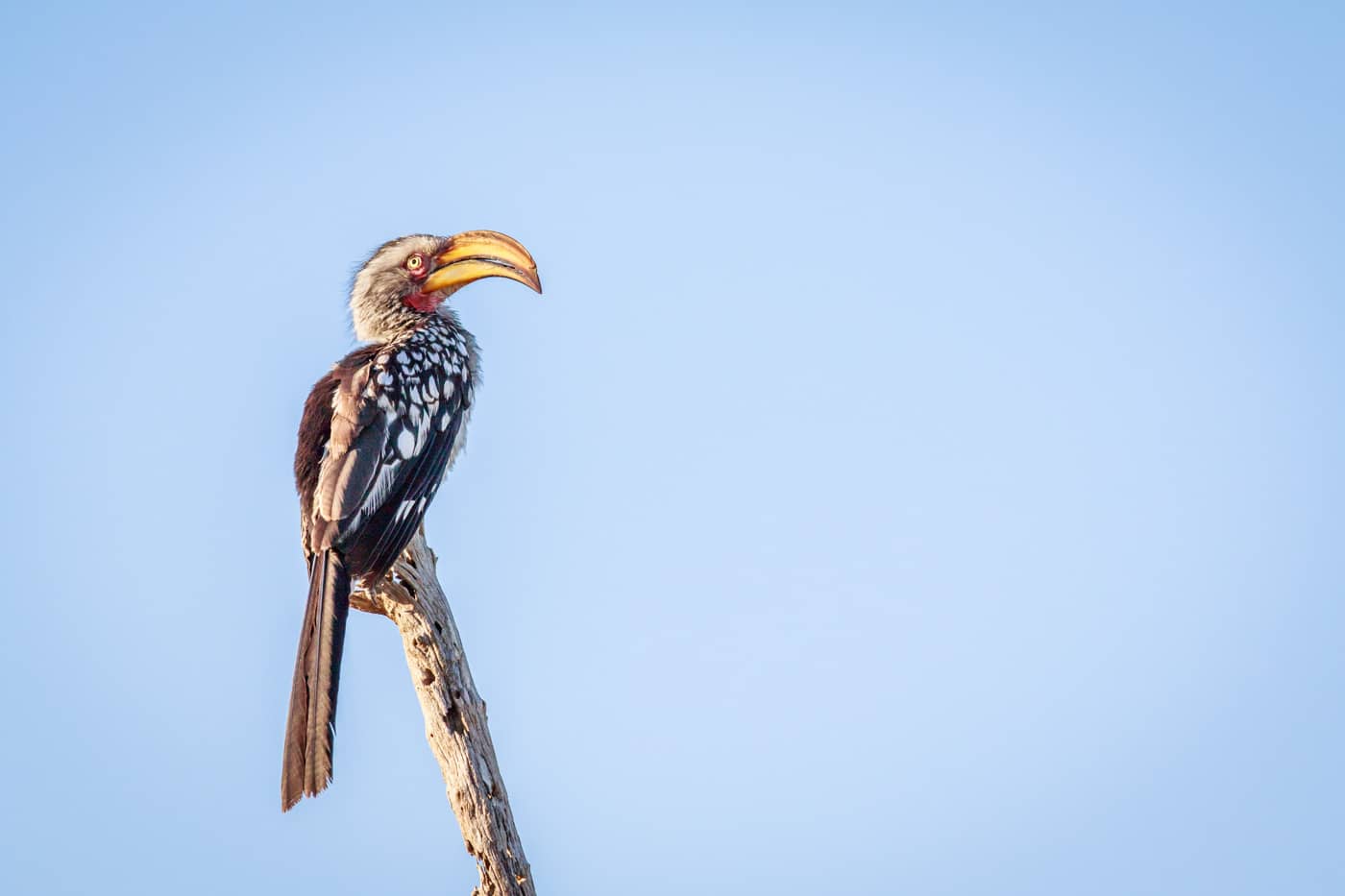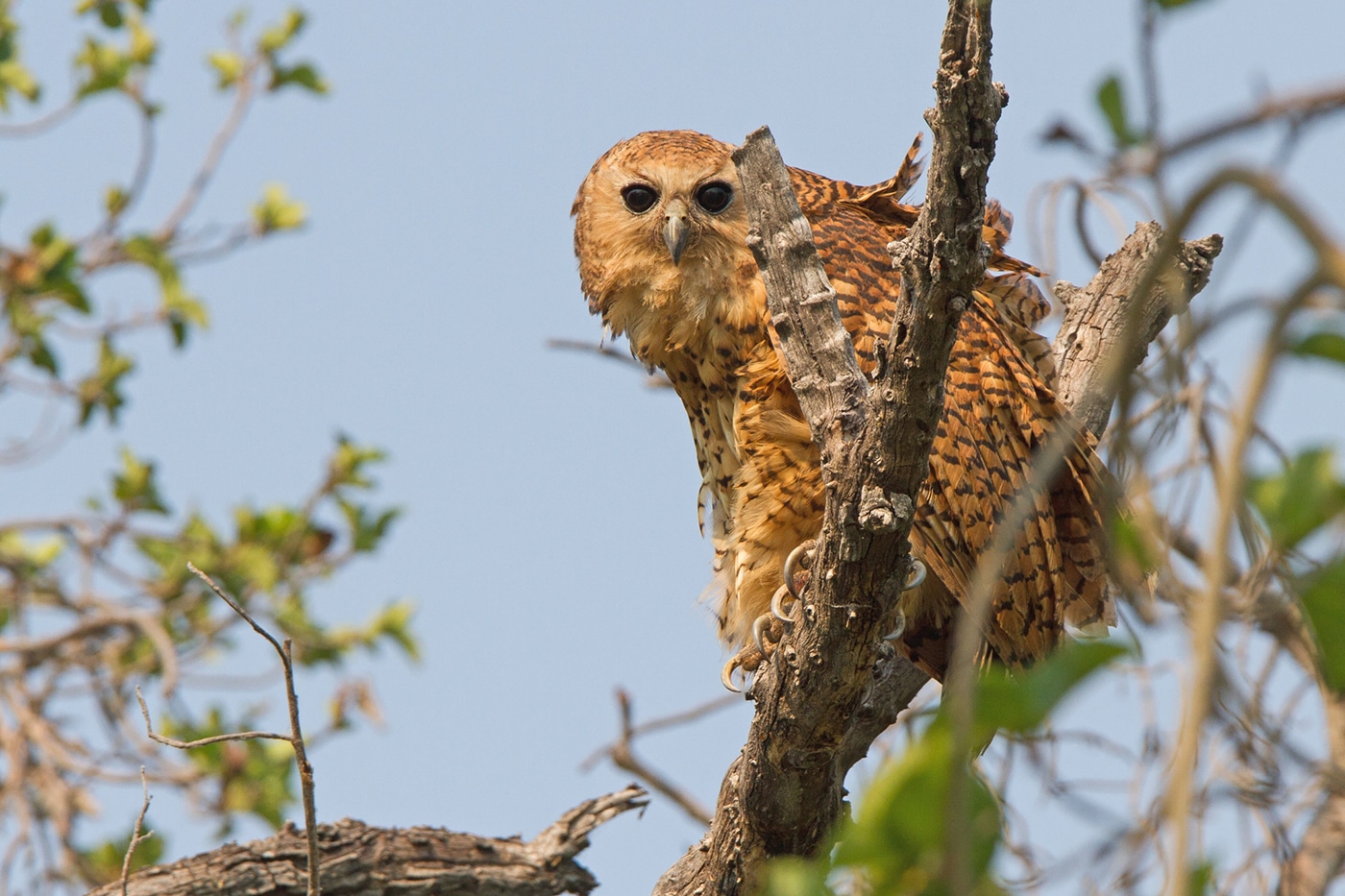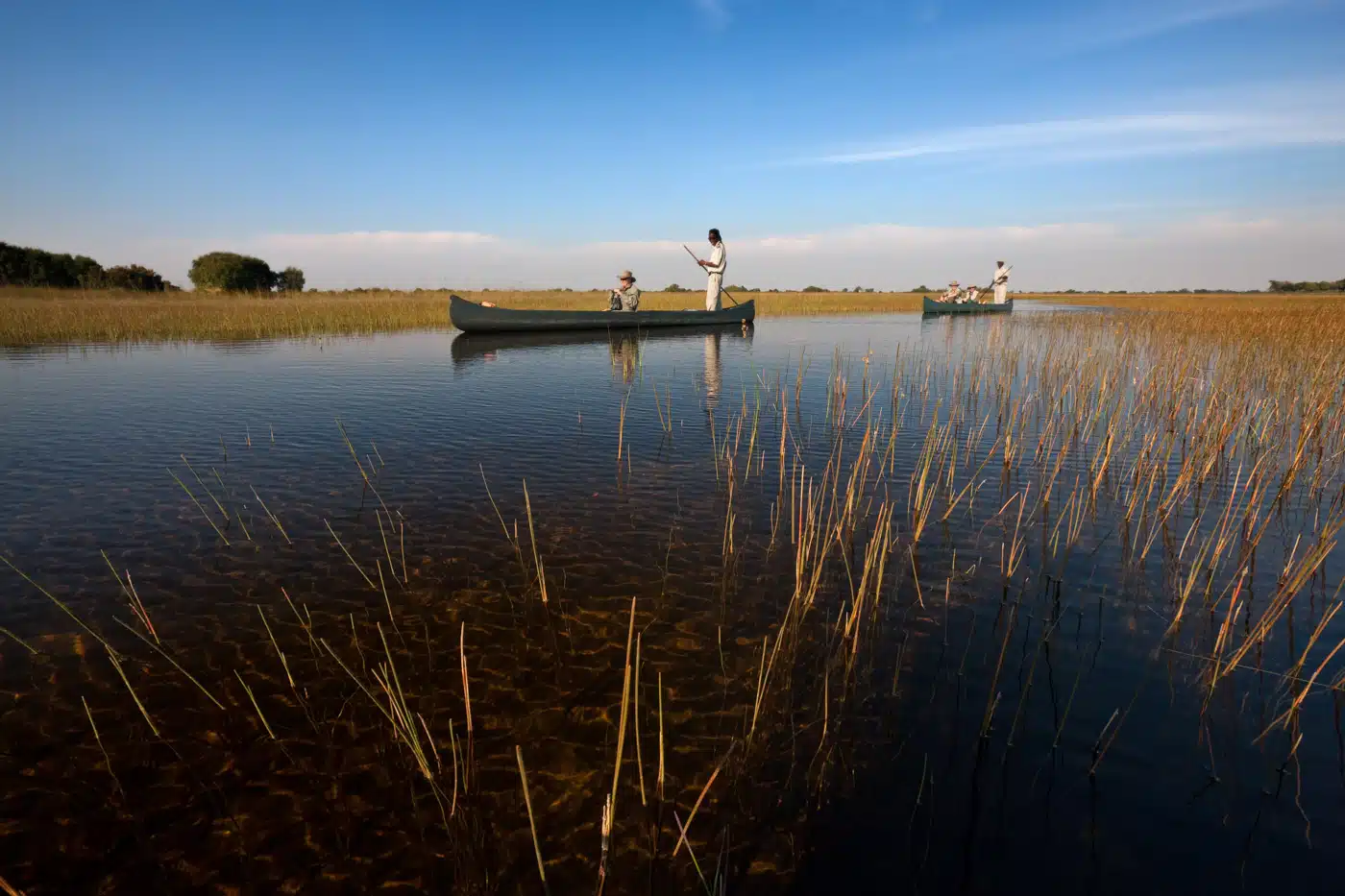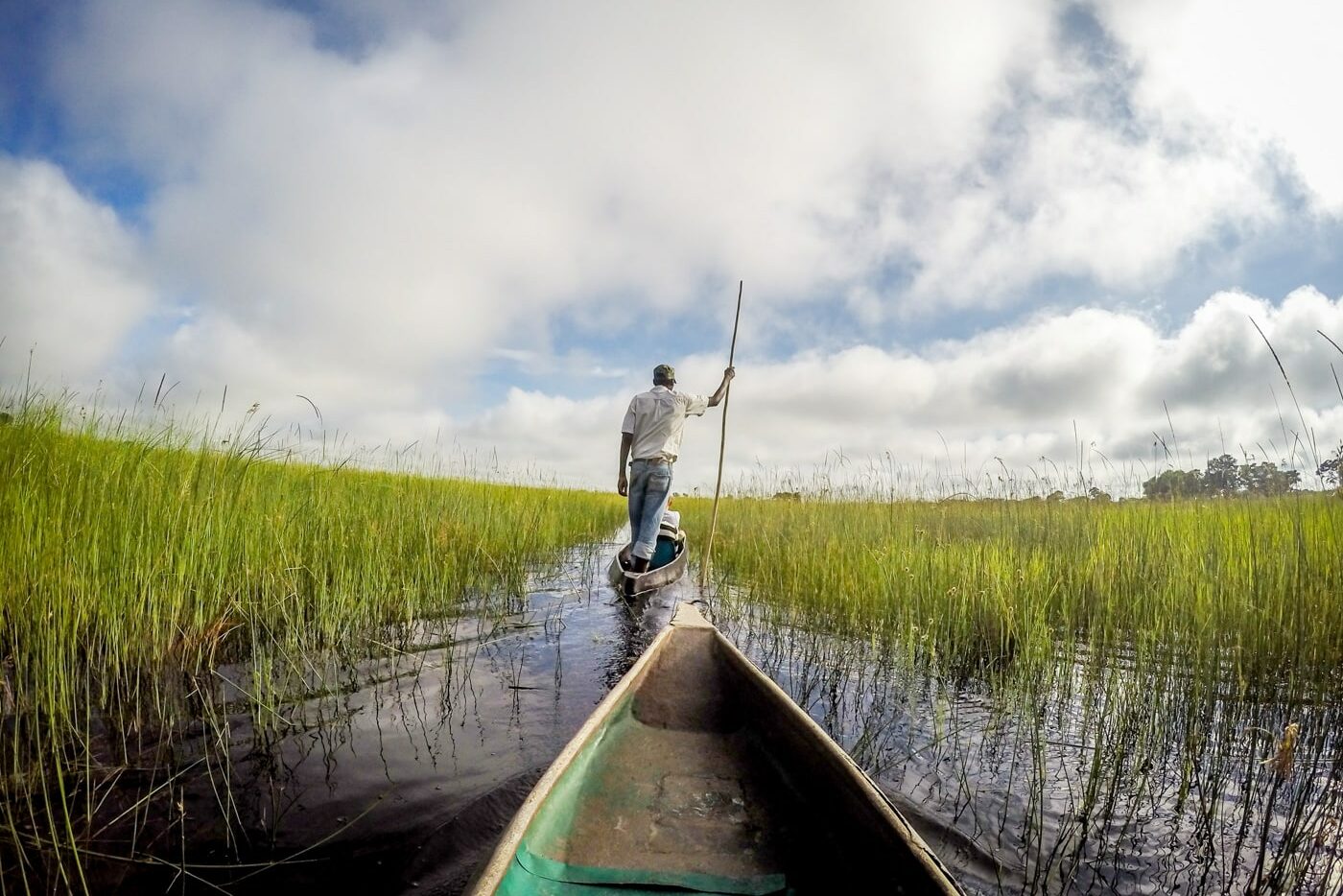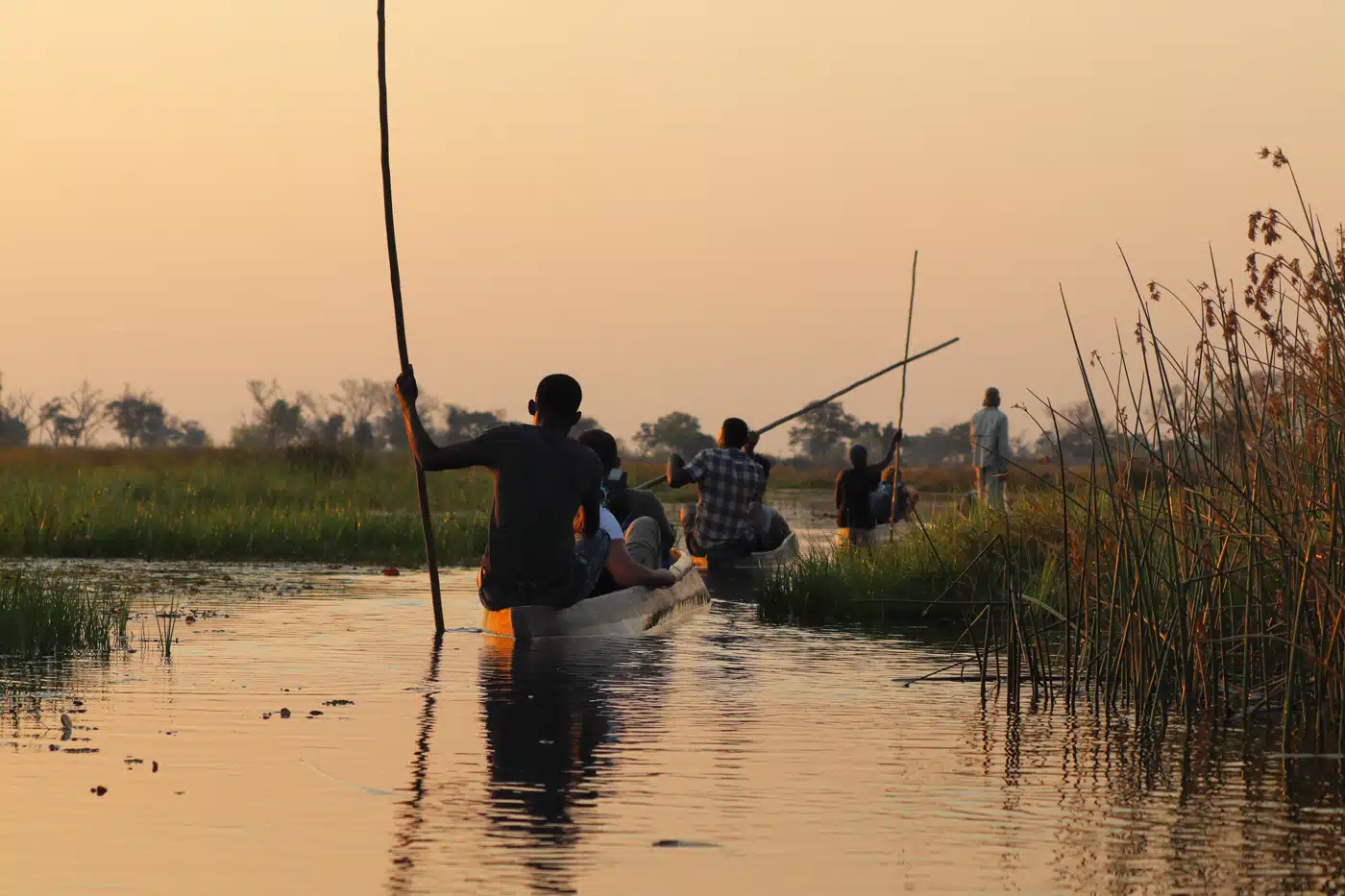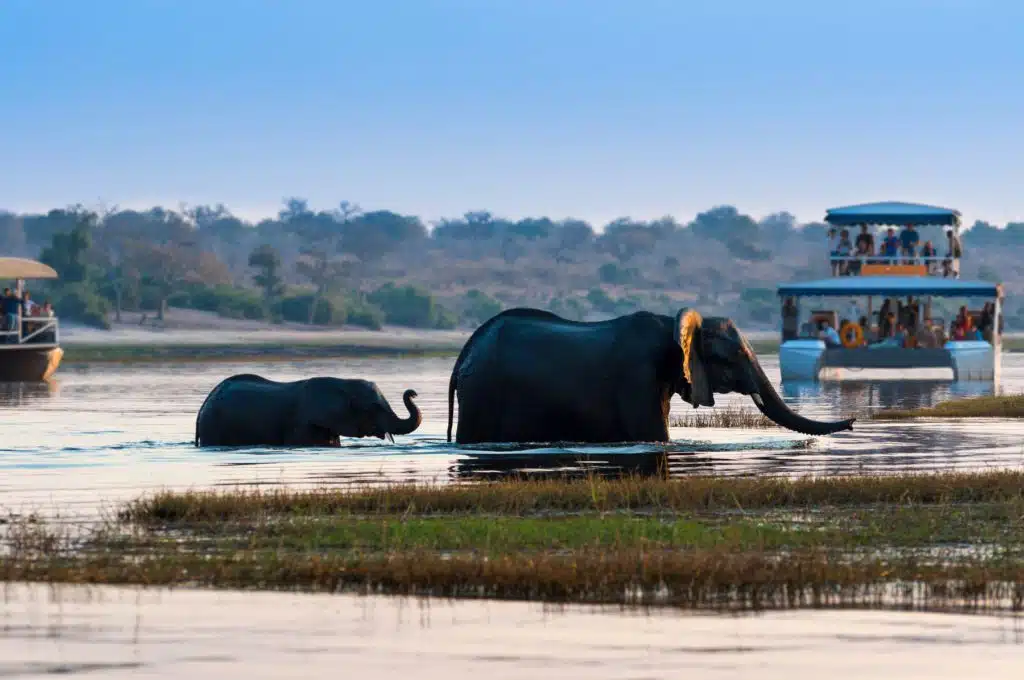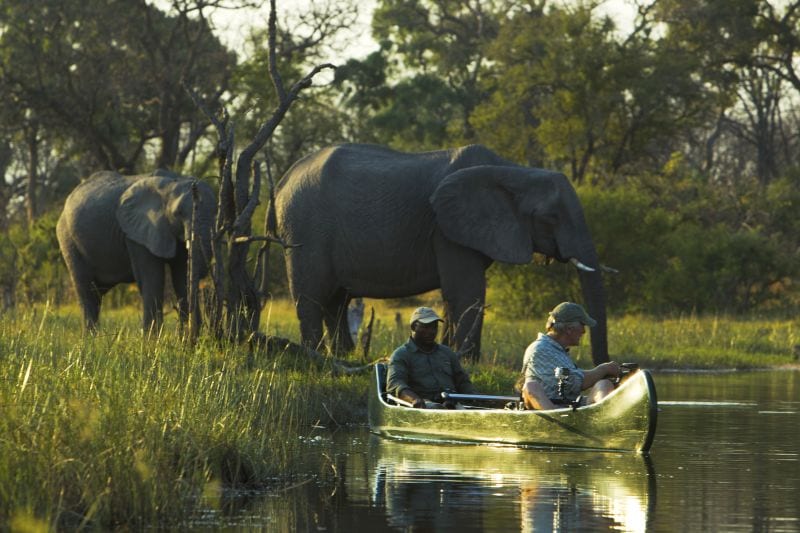IN FULL FLOOD
The Magic of the Okavango
For those searching for a safari with a little more adventure than a daily game drive, Botswana’s Okavango Delta is frequently the destination of choice.
Its acclaim as a fascinating destination, thriving with life and with a distinctly individual landscape, has long been known, and this has established the Okavango not only as a wonderful safari option, but also inspired the ecologically-sound development of a portfolio of luxury lodges and camps.
Formed over 50,000 years ago, the Okavango is one of over 10,000 deltas in the world, but it is distinctly unique. Fed by heavy rains and the Cubango and Cuito Rivers that originate in the Angolan highlands, it swells 300 percent during flood season, its waters feed the surrounding Kalahari Desert, making it vital for the continued survival of the life that resides there. While most deltas empty into the ocean, the Okavango is both landlocked and at a higher altitude, retaining the water in its flood plains.
Though the waterways are the foremost attraction, game drives are also abundant in the region, and neighbouring game reserves and the Makgadikgadi combine to offer a diversity of landscapes and experiences.
While highly popular, the Okavango is both vast and sparsely developed, with only a small number of properties scattered across the banks of the rivers and on private islands. This assures luxury and service, whilst keeping each lodge wonderfully intimate and uncrowded. Likewise, seeing other visitors is a comparative rarity, enabling guests to spend as much time as they wish in any location or with animals.
- Where to Stay in the Okavango
- Okavango Wildlife
- Activities in the Okavango Delta
- Beyond the Okavango
This is also a spectacular region for all manner of travellers. Impeccable lodges provide exceptional standards, fly camps offer a sense of adventure, with itineraries catering to families, couples or romantic occasions, avid photographers, anglers and birdwatchers.
No destination can truly claim to suit every visitor, but in the realms of safari travel the Okavango Delta comes remarkably close.
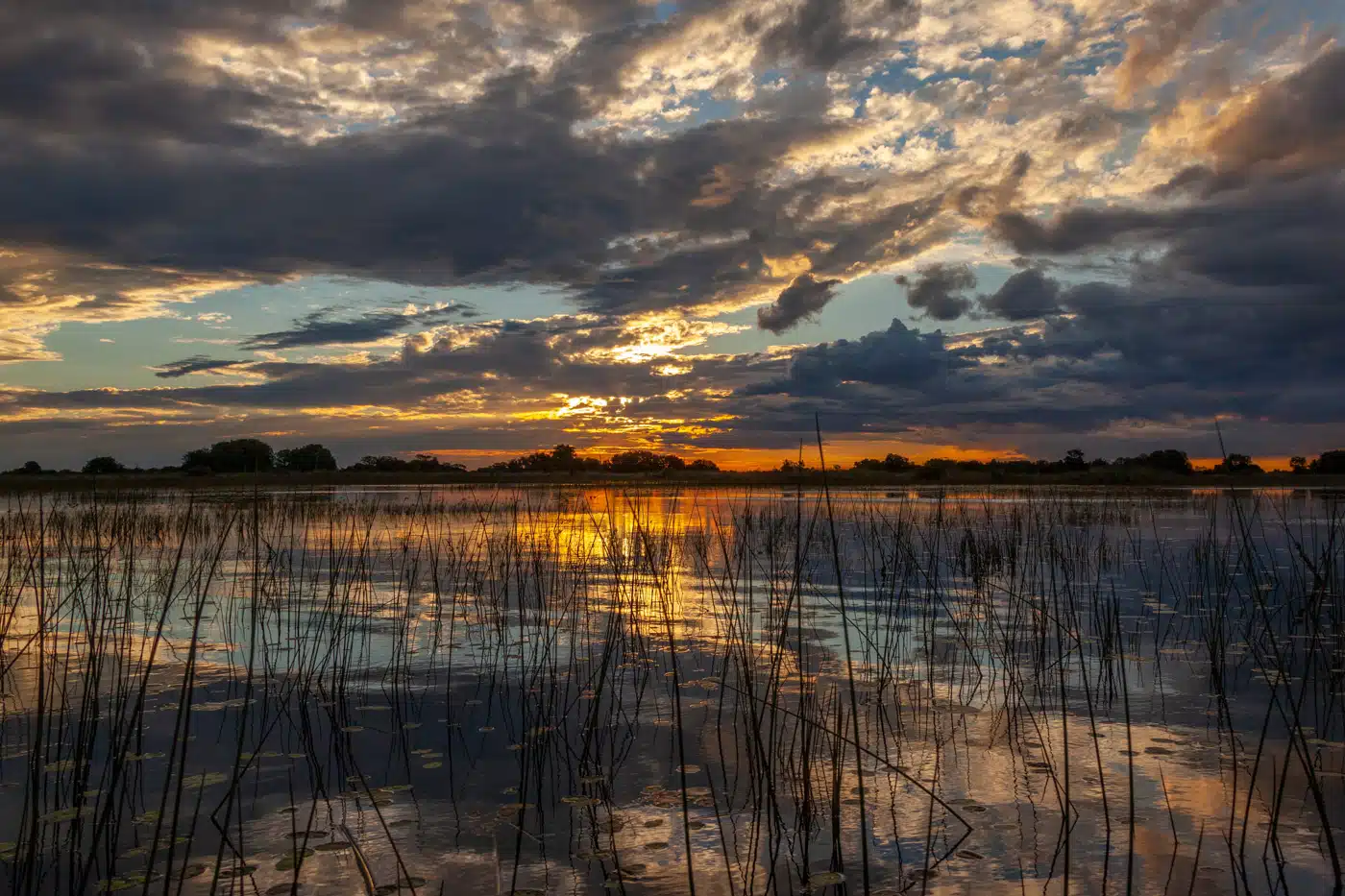
Where to Stay in the Okavango Delta
There is plenty of choice of property in the Okavango Delta, with a significant collection meeting our impeccable standards. We select lodges specifically according to our clients’ wishes, with some better suited to certain demographics or desires. With mobile camps also available, it is often worth considering several different properties to gain the very most of your Okavango experience.
DUBA PLAINS CAMP
A creative combination of classical 1920s tented camp and exceptional luxury chic, Duba Plains is one of the Okavango’s foremost properties. With five bespoke suites, it can be booked by a couple or individually as an extended group. Situated within its own private reserve, Duba Plains has exclusive access to prime game territory, both within the waters and islands of the delta and across the surrounding wooded grasslands. Each suite incorporates its own private verandah, complete with a plunge pool and shaded sala, and includes all modern conveniences for a stay that is wonderfully catered yet immersed in the wild.
JAO CAMP
Set on its own private island, Jao Camp is the height of exclusivity. Each of its five expansive suites and two luxurious villas is replete with plunge pools and water’s-edge balconies and their own private butlers, chefs, guides, and vehicles, heightening the sense of singularity and bespoke attentiveness. Jao has been designed throughout with an inherent inspiration from the nature that surrounds it. Nuances of bird’s nests, ancient trees and the golden grasses of the plains intertwine to create an organic haven within which luxury furnishings and fittings have been incorporated. This intelligent architecture blends seamlessly with the environment whilst also dissolving the impression of separation from the natural world. One feels at once connected to the Delta’s ecosystems and impeccably accommodated.
EAGLE ISLAND LODGE
With over 10,000 islands throughout the Okavango Delta, some up to six miles (10km) in length, there are plenty to accommodate private lodges. While integrating aspects of both nature and culture, Eagle Island Lodge is very much a contemporary property, with bold dark, brushed concrete features nestled under a timber and grass roof, pendulous light fittings hanging like intricate bird’s nests from the raw timber rafters. From this superb residence, one can drift on the calm waters in a mokoro, take to the air for a private helicopter champagne breakfast or venture out on a more traditional game drive. Elephant wander lazily past the communal al fresco dining deck, birds swoop and serenade in the skies above and the golden light of dawn and dusk flood the interior. Each deluxe tented room opens onto panoramic views of the surrounding grasslands and waterways, and guests can dine on their private balcony or unwind with a sundowner as nature settles around them for the evening.
BARCLAY STENNER
Barclay Stenner has redefined Okavango accommodation and is distinctly unique, both in Botswana and across the whole of Africa. The tented camps boast opulent lodgings, with four-poster beds festooned in fly nets floating upon a scattering of floor rugs and brass furnishings adding a touch of antiquity to the ambience. Each tent features an en suite bathroom and superb views, but what sets the camp apart is that it is continually on the move. Though unfeasible when reclining on the sumptuous bed or penning one’s journal at a timber desk, each tent is completely demountable, relocating according to the migrations of wildlife. Yet despite its impermanence, there is no compromise. Highly talented and experienced chefs serve up delectable cuisine worthy of any urban restaurant and each client is catered to specifically and personally. So much so that singer Taylor Swift selected Barclay Stenner for her Botswana adventure and, when hosting the retired conductor of the Cape Town Philharmonic, the founders arranged – unbeknown to their guest – for several members of the orchestra to play at sundown as they floated past the camp aboard a boat. Though it may lack the brick-and-mortar establishment of other properties, this is the unparalleled level of treatment received on a Barclay Stenner safari.
CAMP OKAVANGO
With its intertwined walkways and abundance of vantage points, Camp Okavango is a wildlife photographer’s dream destination. The property focusses on removing the boundary between wonderfully comfortable and secure property and the unfettered wilds of the delta, with raised fire pit, dining area and lounge all reaching out to the water and landscapes beyond. The 11 suites accommodating a maximum of 24 guests also dispense with a more cloistered design, folding doors opening the otherwise intimate and cosy rooms to the elements. A communal pool, library and sumptuous lounge are shared among the few guests, and for those staying more than three nights, an open-air sleepout allows for a complete nocturnal immersion under a radiant blanket of stars.
Okavango Wildlife
The Okavango provides a vital life source for a wealth of wildlife across the food chain. Birds migrate to the delta to breed and nest in the sanctuary of the tall reeds, elephant relish the lush vegetation and wallowing in the waters, grazers, including zebra, wildebeest and numerous antelope species, thrive on the fresh grasses and the predators in turn thrive on the abundance of grazers.
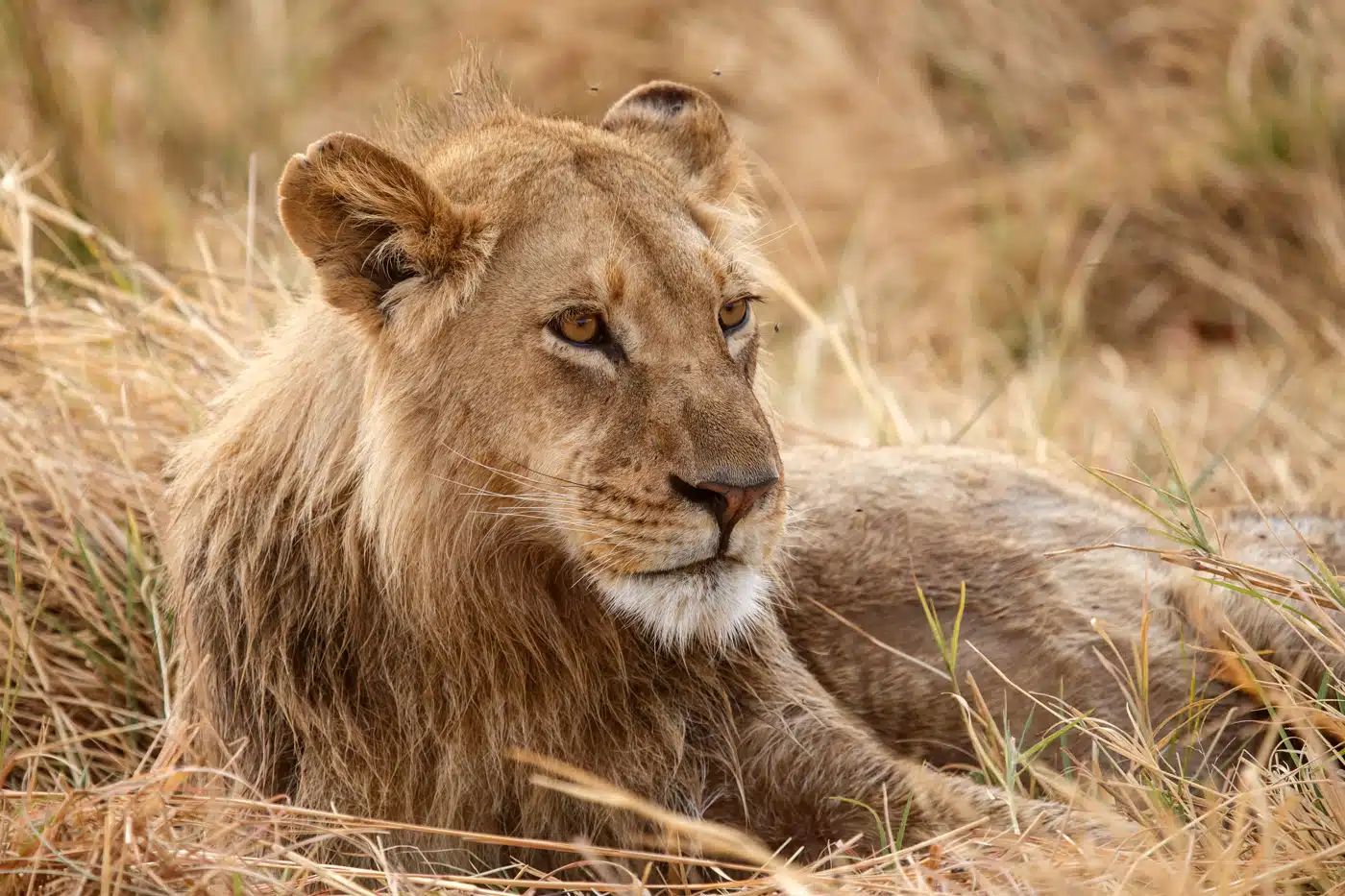
One of the greatest appeals of the Okavango Delta for nature lovers is that it is a confluence of three environments: land, water and air. This encourages a greater array of species, but also three distinct experiences. One can take a boat on the riverways to spot elephant drinking, hippo wallowing and crocodile basking on the shoreline, or venture away from the more aqueous regions for a game drive. Here, more familiar sights can be seen, but the ubiquitous presence of water adds a distinct uniqueness. Lion cubs follow their mothers through the shallows, zebra make perilous water crossings and herds of antelope gallop, sending cascades of water skywards.
Though the Okavango is a year-round destination, there are better times to visit. Interestingly, for somewhere so distinguished for its aquatic landscapes, the wet season – between November and March – is not the best time to go, even for nature viewing. When the rains abate in April, the water disappears with it across the delta’s periphery, drawing wildlife inwards to the remaining perennial source of hydration.
It isn’t only land-borne animals that congregate at this time, and the skies are filled with a dazzling kaleidoscope of colour, from yellow- and saddle-billed storks to kingfishers, hornbills and the vibrant lilac-breasted roller. Wonderful for passionate twitchers, it is also an incredible spectacle for wildlife enthusiasts of all persuasions.
One aspect that draws photographers to the Okavango in particular is the perspective that is achievable. Perhaps not necessarily better than on a game drive, viewing wildlife from a boat or mokoro offers a distinctly unique point of view, drawing you down to eye level with the mammals on the banks and the reptiles that peer from beneath the water’s silky surface.
With this separation of river and land, nature is more inclined to remain undisturbed, and the almost silent passage of a mokoro allows one to approach far closer than might be possible in a rumbling four-wheel drive.
WILDLIFE SPECIES:
- Antelope
- Common Eland
- Greater Kudu
- Puku
- Black-Backed Jackal
- Caracal*
- Serval*
- Aardvark*
- Aardwolf*
- Bat-Eared Fox*
- Honey Badger*
- Crested Porcupine
- Common Warthog
- Chacma Baboon
- Vervet Monkey
- Nile Crocodile
BIRD SPECIES:
Pel’s Fishing Owl Photo: Rare Earth
- Helmeted Guineafowl
- African Fish Eagle(
- Pel’s Fishing Owl*
- Egyptian Goose
- South African Shelduck
- African Jacana
- African Skimmer
- Marabou Stork
- Crested Crane
- African Spoonbill
- African Darter
- Southern Ground Hornbill*
- Wattled Crane
- Lilac-Breasted Roller
- Secretary Bird
- Common Ostrich
* denotes rare species
The Okavango River Basin provides a vital source of water to about 1 million people, the world’s largest population of African elephants and significant populations of lions, cheetahs and hundreds of species of birds. However, this once unspoiled oasis is now under siege due to increasing pressure from human activity. From National Geographic Documentary Films, Into the Okavango chronicles a team of modern-day explorers on their first epic four-month, 1,500-mile expedition across three countries to save the river system that feeds the Okavango Delta, one of our planet’s last wetland wildernesses. Learn more about the Okavango Wilderness Project: https://www.nationalgeographic.org/projects/okavango/
Activities in the Okavango Delta
Simply visiting the Okavango is stunning enough in itself to be both captivating and entertaining, but there are several ways to experience it.
Even the more conventional game drives take on a new dimension. Moving through the drier grasslands, one could be forgiven for thinking they are in Kruger National Park or similar, but the water is never far away, and many drives will include shallow river crossings and a more robust offroad experience, though not to the discomfort of passengers. This allows each excursion to encompass a range of ecosystems and landscapes and this variable terrain provides not only changing views but also the diverse wildlife that comes with them.
The abundance of creatures, particularly the predators, prevents visitors from venturing out on foot at will, but a small amount of walking safaris are possible at specific camps.
Instead, and what the delta obviously excels at, boat safaris bring both tranquility and abundant game viewing. Whether by steel boat or traditional mokoro (originally hand carved from a single ebony or sausage tree, though now more sustainably made of fibreglass), a river safari is imperative to an Okavango journey. Most lodges and camps will provide this activity and often also offer sundowner cruises to enjoy the setting sun with a glass of Champagne in hand.
Also on the water, fishing is a much sought-after adventure and avid anglers from around the world visit specifically to try their chances at netting the ferocious tigerfish, one of the world’s most challenging fish to land. Though strictly on a catch-and-release basis and banned in the early months of the year to protect fish stock, this is never the less an incredibly popular and thrilling pastime.
The thousands of islands that dot the delta like a leopard’s skin are an enticing destination for exploration. Some boat trips will include an island landing, the best way to enjoy the solitude of your own private island – and appreciate the vastness of the Okavango – is by helicopter. Collecting guests from their lodge, pilots will fly their passengers to a secluded beach and present a Champagne breakfast, light picnic or sundowners.
Some lodges will also offer cultural activities, including in-camp performances and village visits with the BaSwarna people. Further afield, it is also possible to visit with the San people of the Makgadikgadi salt pans – a truly special experience, witnessing how this foraging tribe – one of the world’s oldest – has sustained itself for millennia.
Beyond the Okavango Delta
Bordering the Kalahari, the Okavango is an aquatic anomaly. Reaching beyond its boundaries, a new collection of experiences can be found.
CHOBE NATIONAL PARK:With the Chobe and Linyanti Rivers coursing through its heart, there is much about Chobe that is akin to the Okavango, but it is also removed from the delta system itself. Wetlands are predominant, but the park also contains larger areas of grass and woodlands. Houseboat cruises transport guests through ever-changing landscapes and game drives and walking safaris are also possible. There are also a number of flycamps available in Chobe National Park.
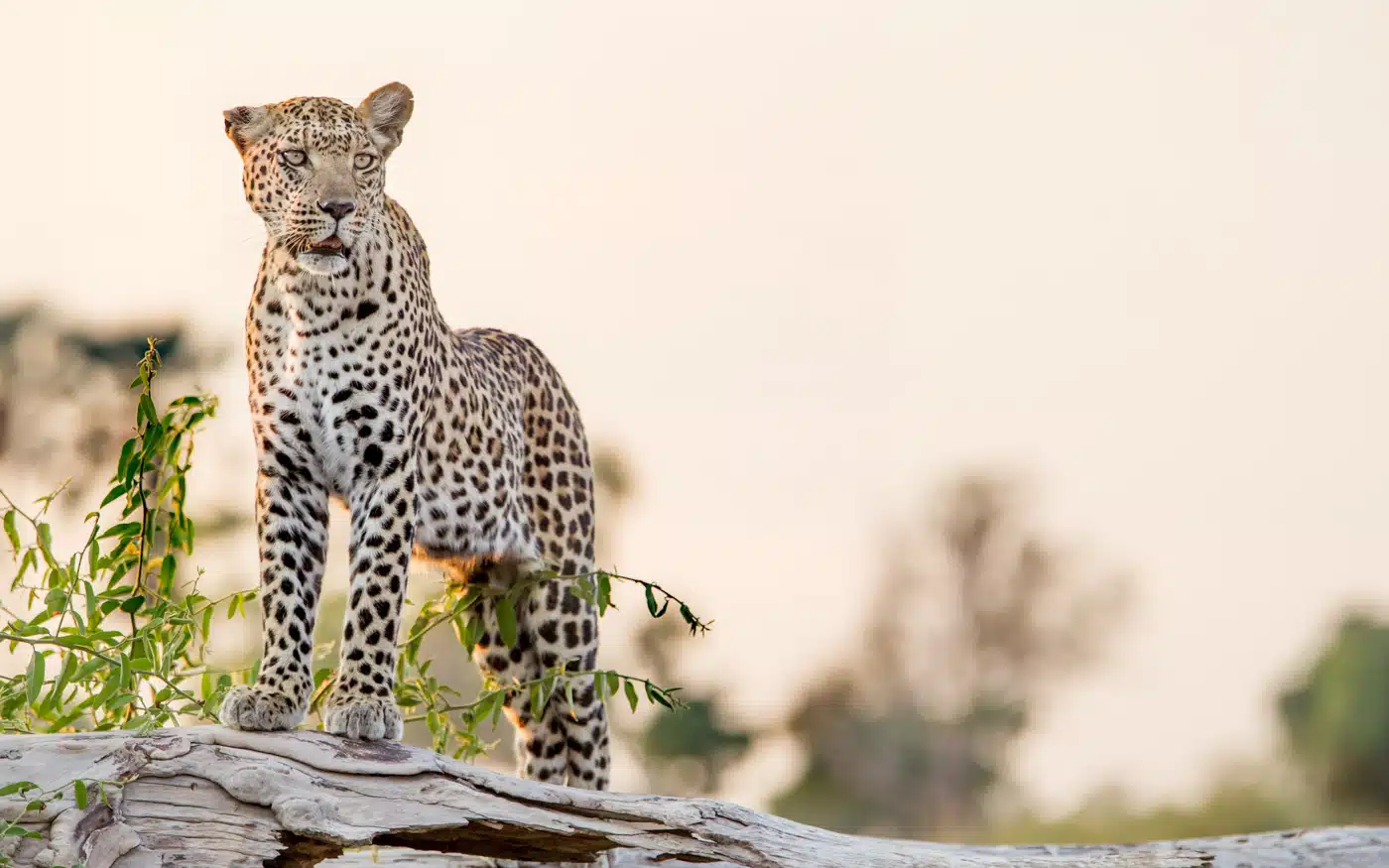
MAKGADIKGADI SALT PANS: Usually requiring a transfer and change of accommodation, the Makgadikgadi is often combined within an Okavango itinerary, and rightly so. Vastly contrasting the delta, these ancient salt pans are an arid expanse of wilderness. While low on wildlife, some animals can be found in the pans that provide somewhat of a sanctuary for herbivores, with most predators preferring the easy and plentiful quarry found closer to the water. The Makgadikgadi is also one of the foremost habitats for meerkats. An overnight camp-out on the otherworldly salt bed is spectacular. Escorted by San guides, guests can hear their stories and traditions around the campfire as the sun sets, before witnessing one of the most stunning astral displays to be seen anywhere on the planet. A small yet satisfying aspect of the pans is that, without water and with few creatures, it is absent of mosquitoes, so cosy bed rolls are placed directly on the earth and the heavens are viewable as one drifts off to sleep without the obstruction of fly nets or tents.
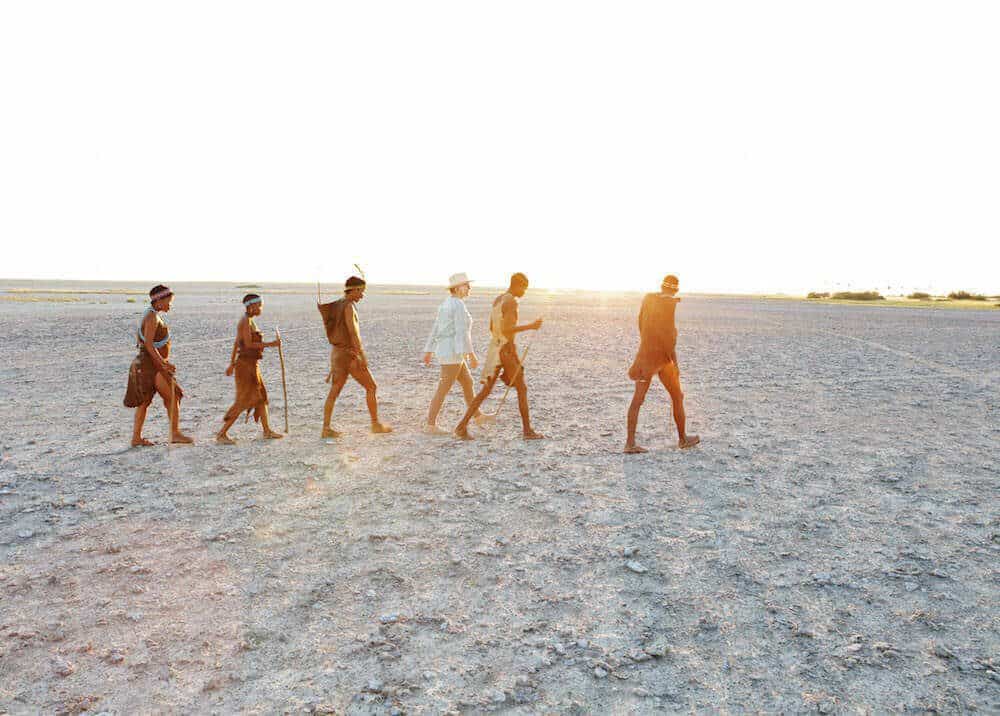
Photo: Natural Selection’s San Camp
LINYANTI WILDLIFE RESERVE:Forming a border between Namibia and Bostwana, the Linyanti River feeds the wildlife reserve. As with Chobe National Park, it is a superb combination of ecosystems and regarded as one of the most underpopulated regions yet with a high density of nature. While particularly preferable for birdwatchers, it also provides some of the best game viewing in Botswana.
CENTRAL KALAHARI GAME RESERVE: Juxtaposing the heavily hydrated north regions of Botswana, the Central Kalahari Game Reserve was originally established as the homeland of the San people. The San are often referred to as Bushmen, though this is now considered derogatory as it etymologically stems from the Dutch term ‘bossiesman’, meaning ‘bandit’ or ‘outlaw’. Its sheer magnitude is overwhelming and the reserve is as desolate as it is astonishing. Distinctly arid, the plantlife there is plentiful enough for springbok, steenbok and wildebeest to dwell in number. Taking advantage of this, cheetah can also be found here in reasonable numbers. Fed by the delta, sporadic waterholes make for striking viewing, with sworn enemies of the plains sometimes sipping the waters shoulder to shoulder in a parley of necessity – albeit with a cautious and alert eye.
The Okavango Delta is unarguably unlike anywhere else in Africa, indeed, in the world. The proliferation of game, the extraordinary vistas, the opportunity for river safaris, and lodges elevated above the river system give all the encouragement necessary to prospective travellers.
Add to this some of the most experienced and talented guides, luxurious properties and impeccable service and the Okavango provides the recipe for a truly fulfilling safari experience.
Whoever the guest, we have received nothing but resounding appreciation for every itinerary we have provided, and despite perhaps being more costly than other destinations, the investment is always more than justified.
Let us take you to the Okavango Delta – contact your Travel Designer today.
